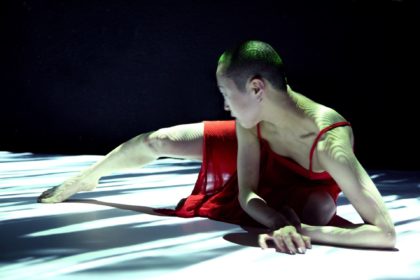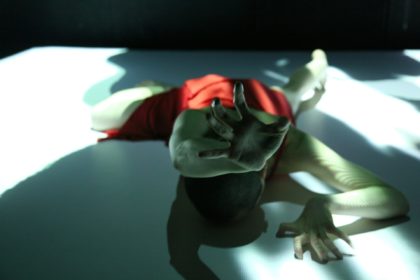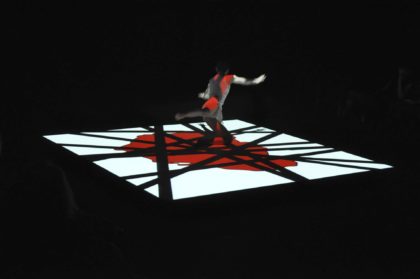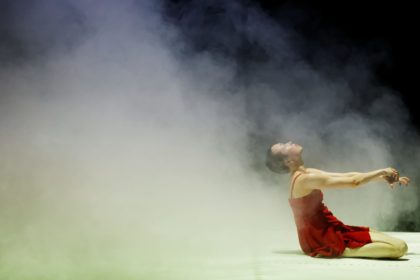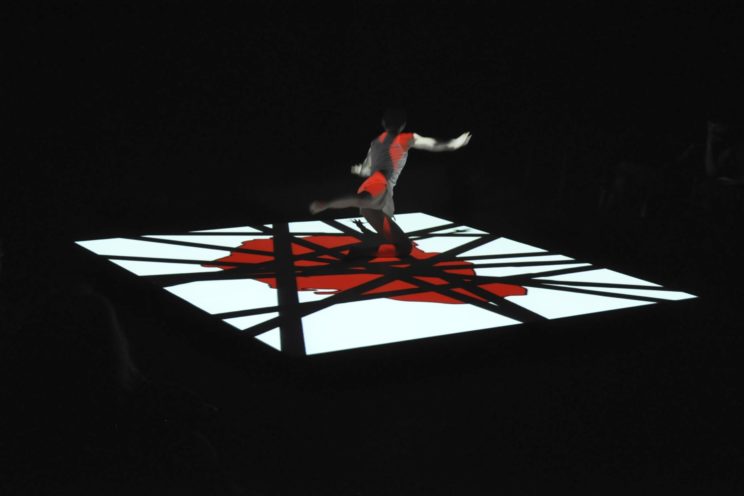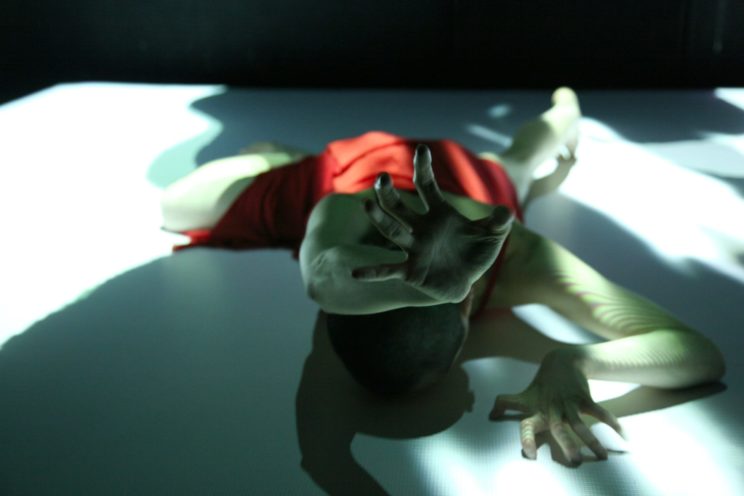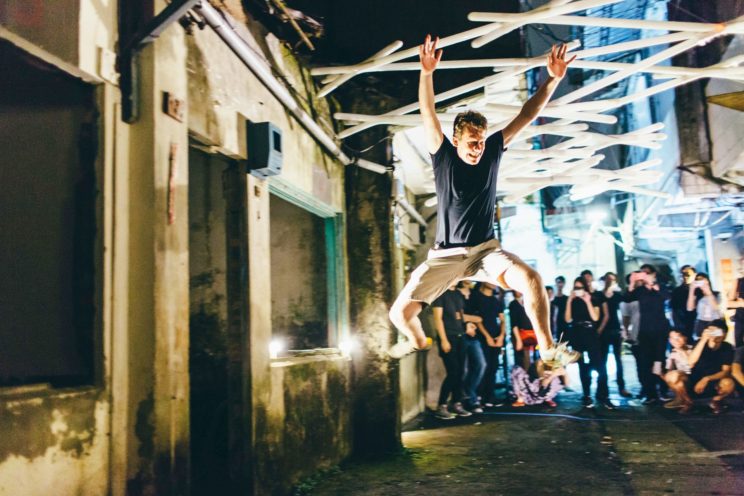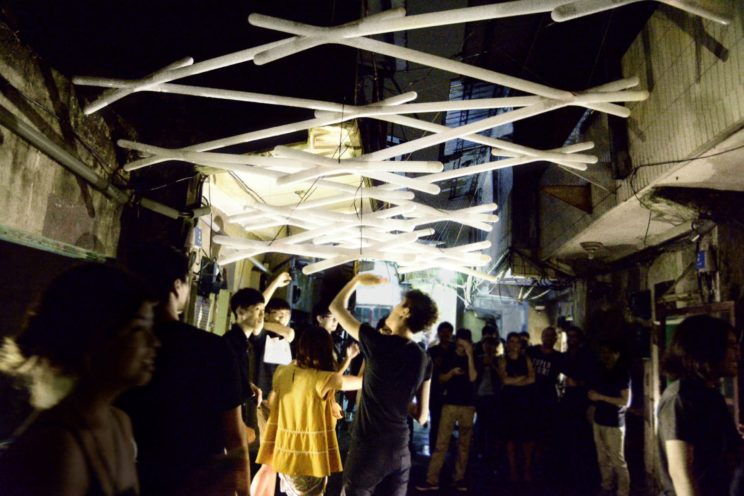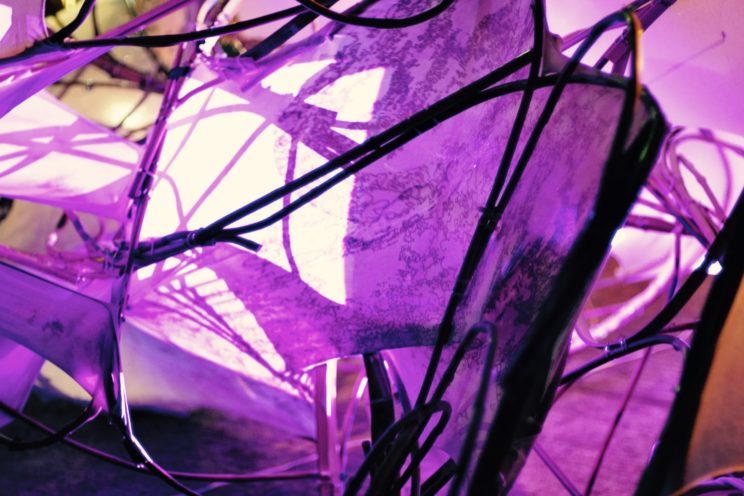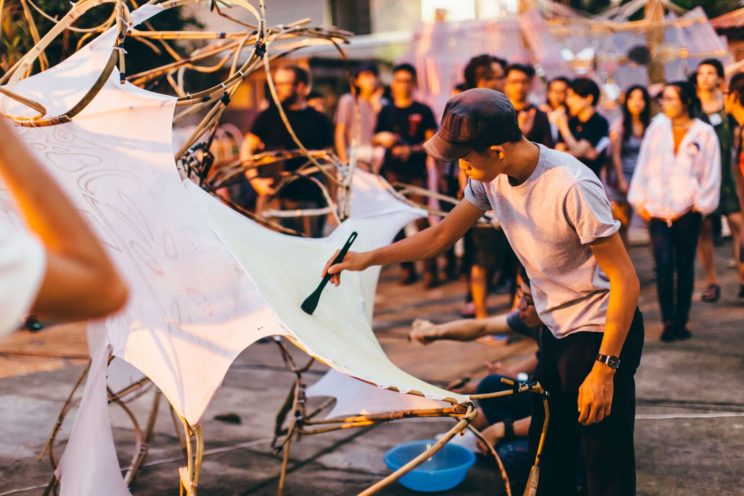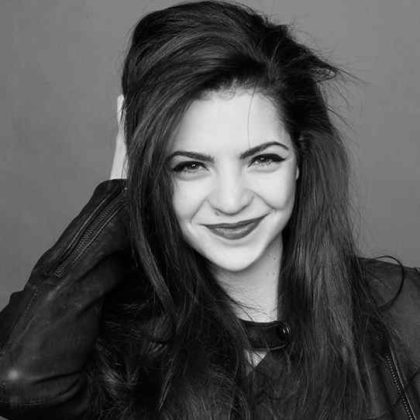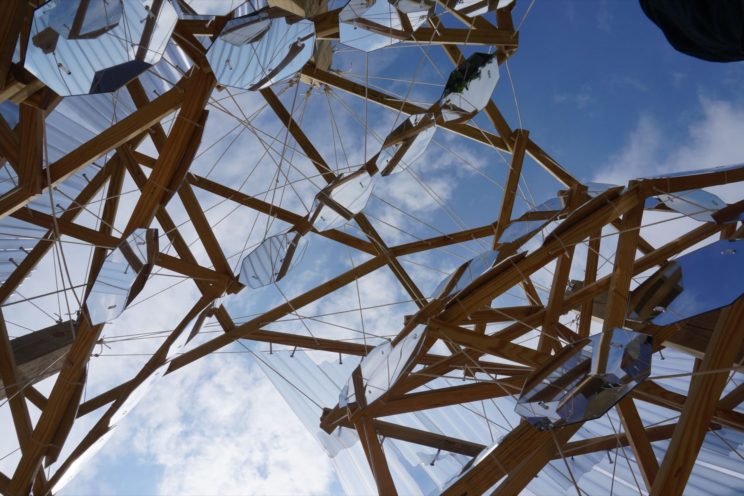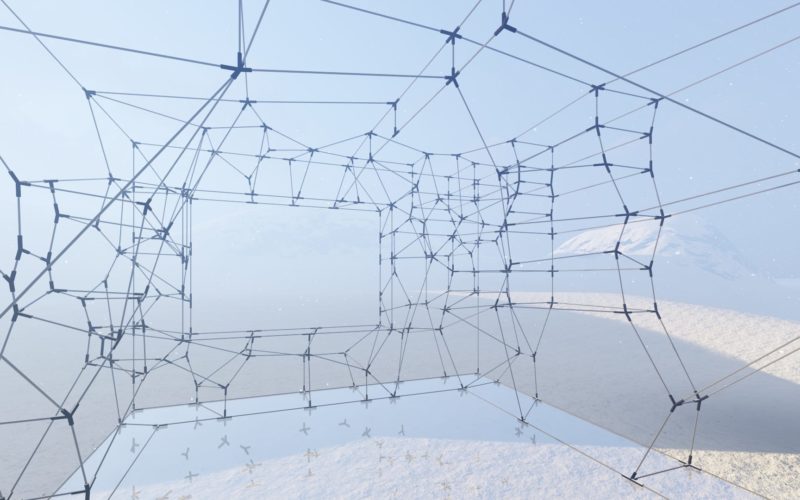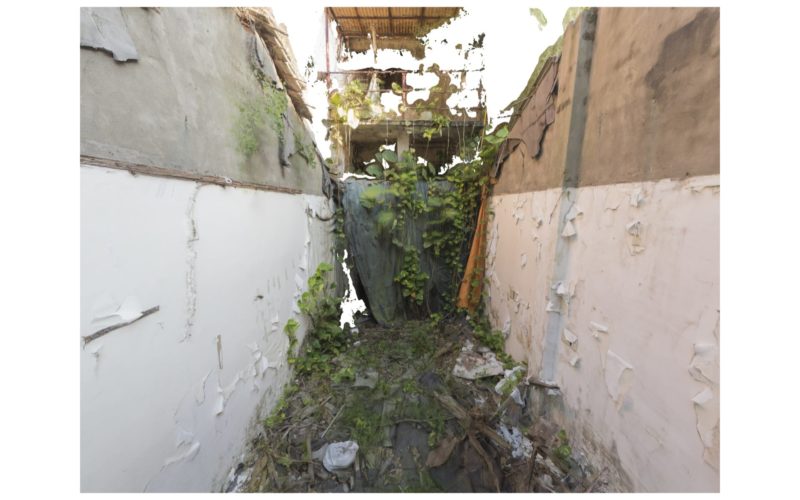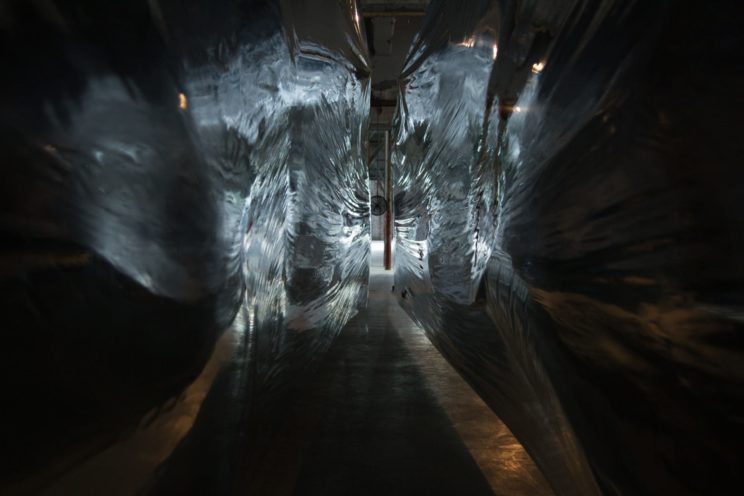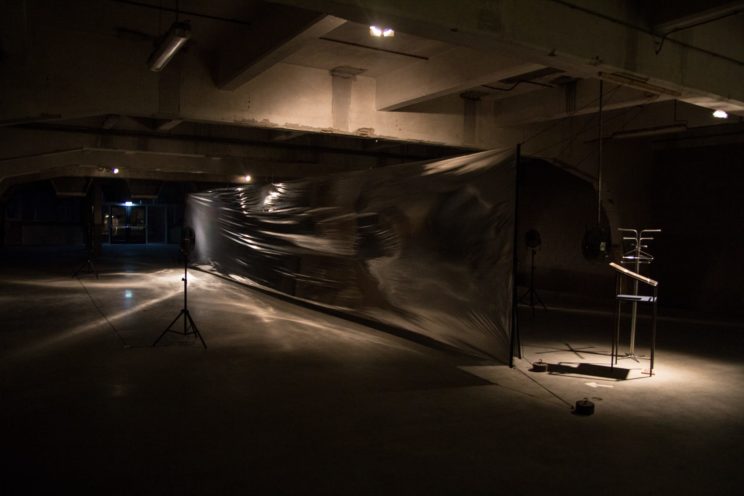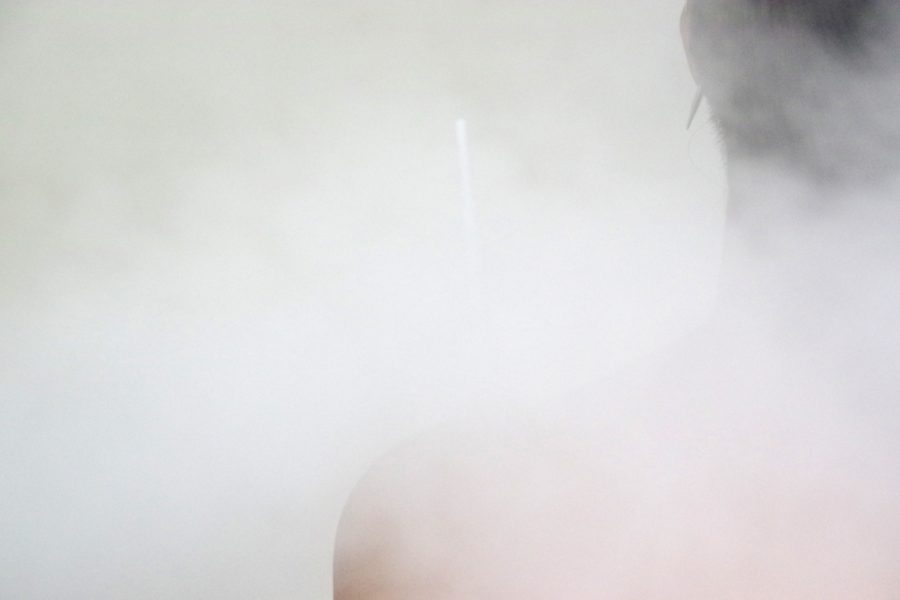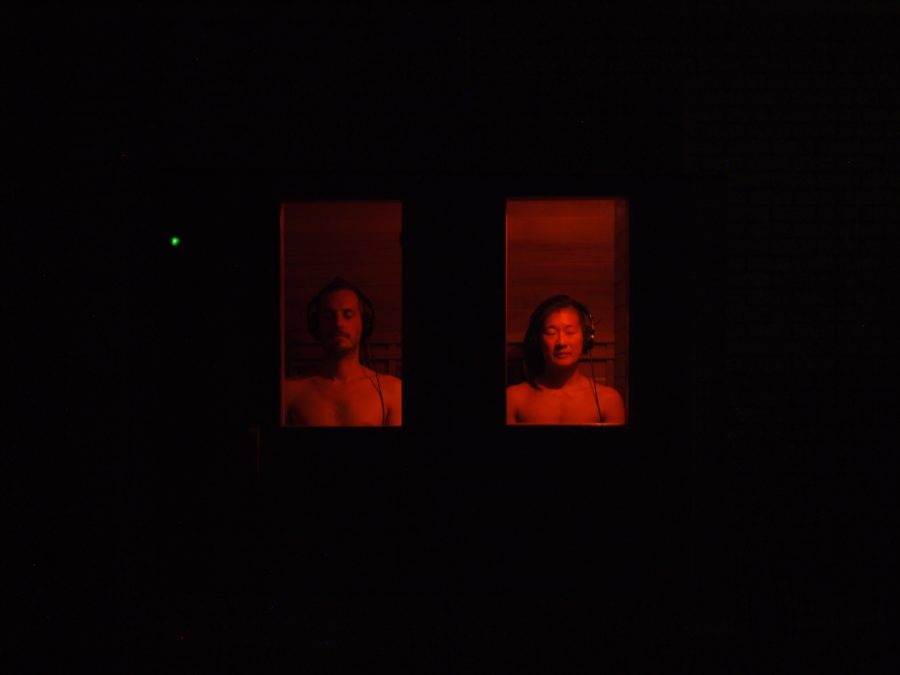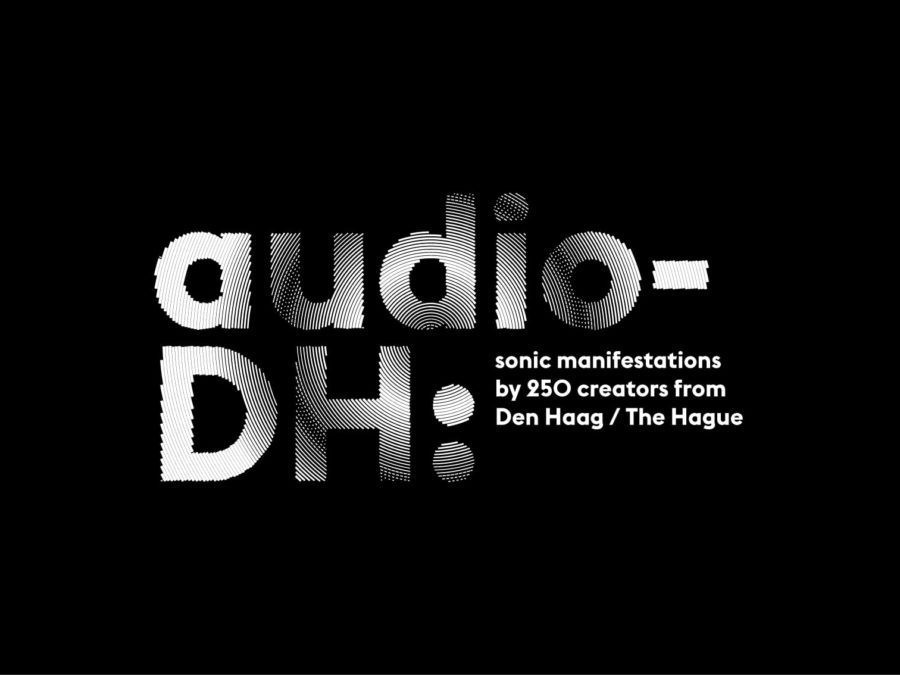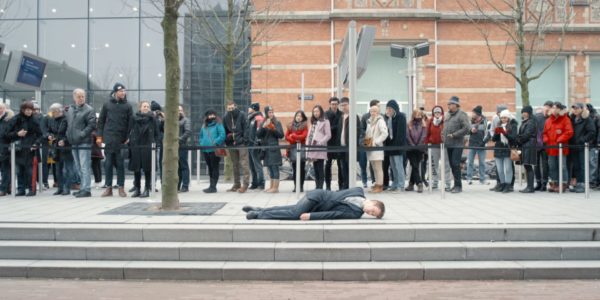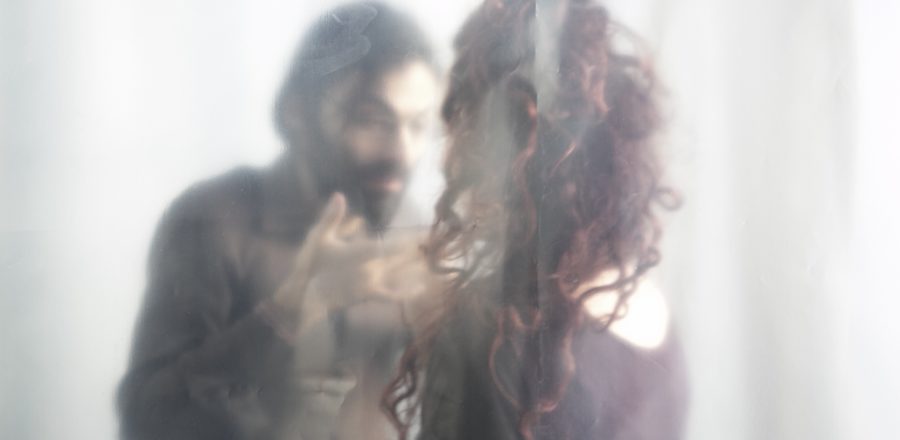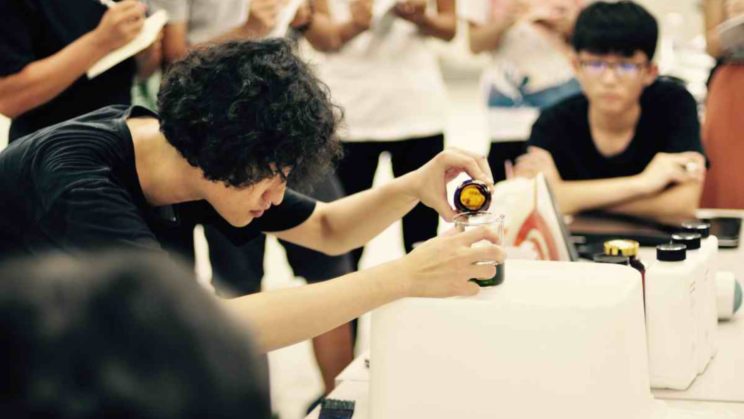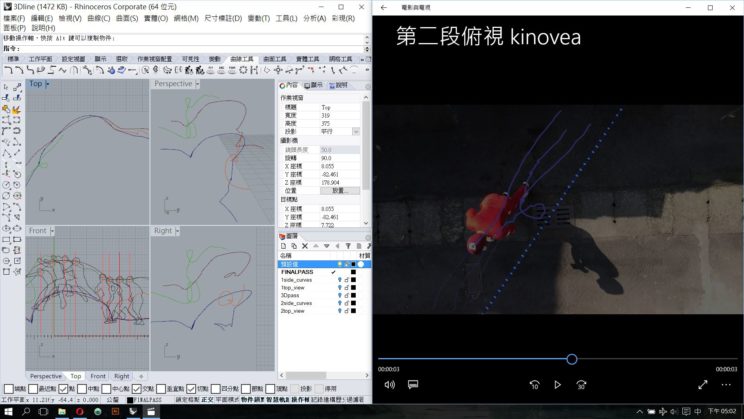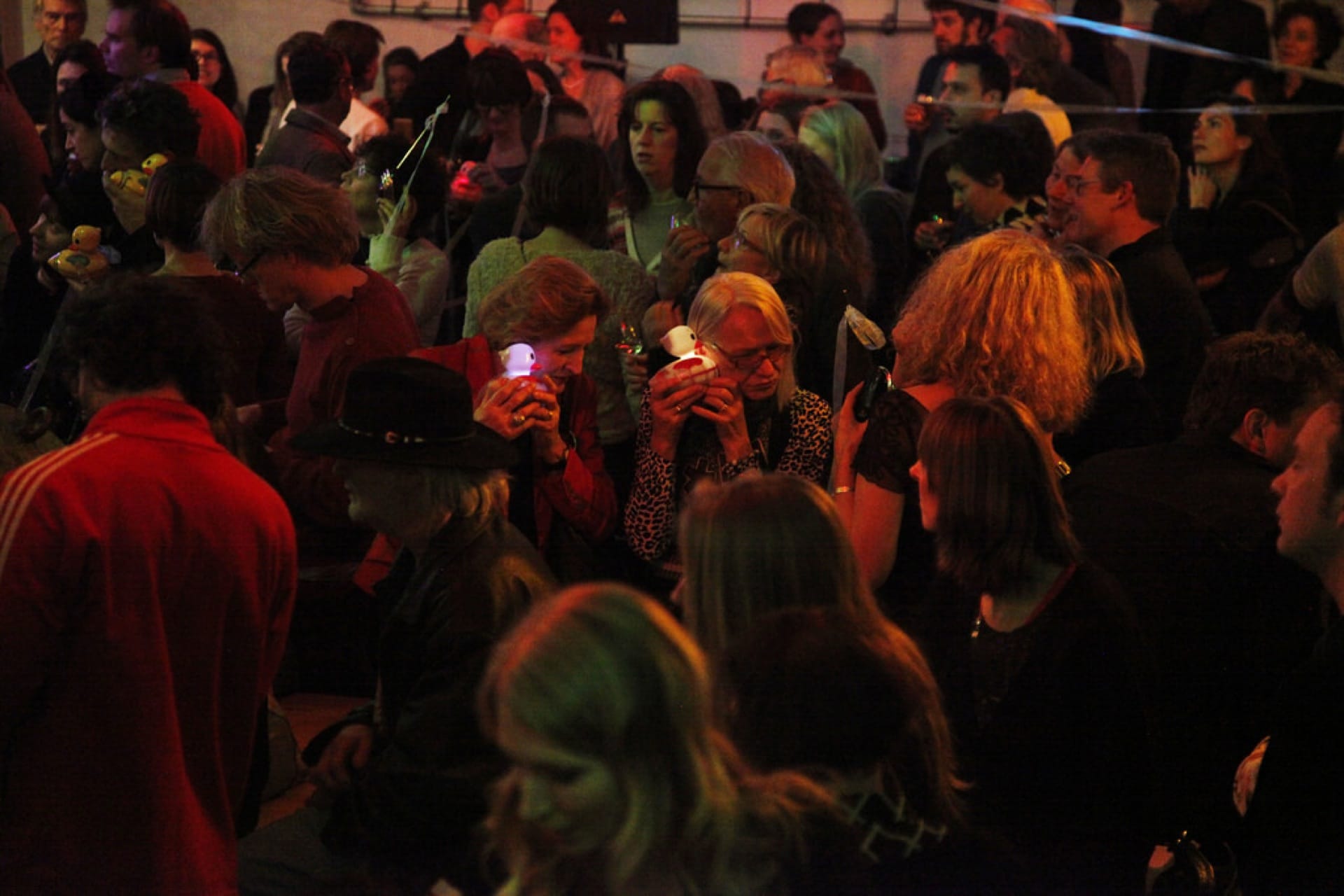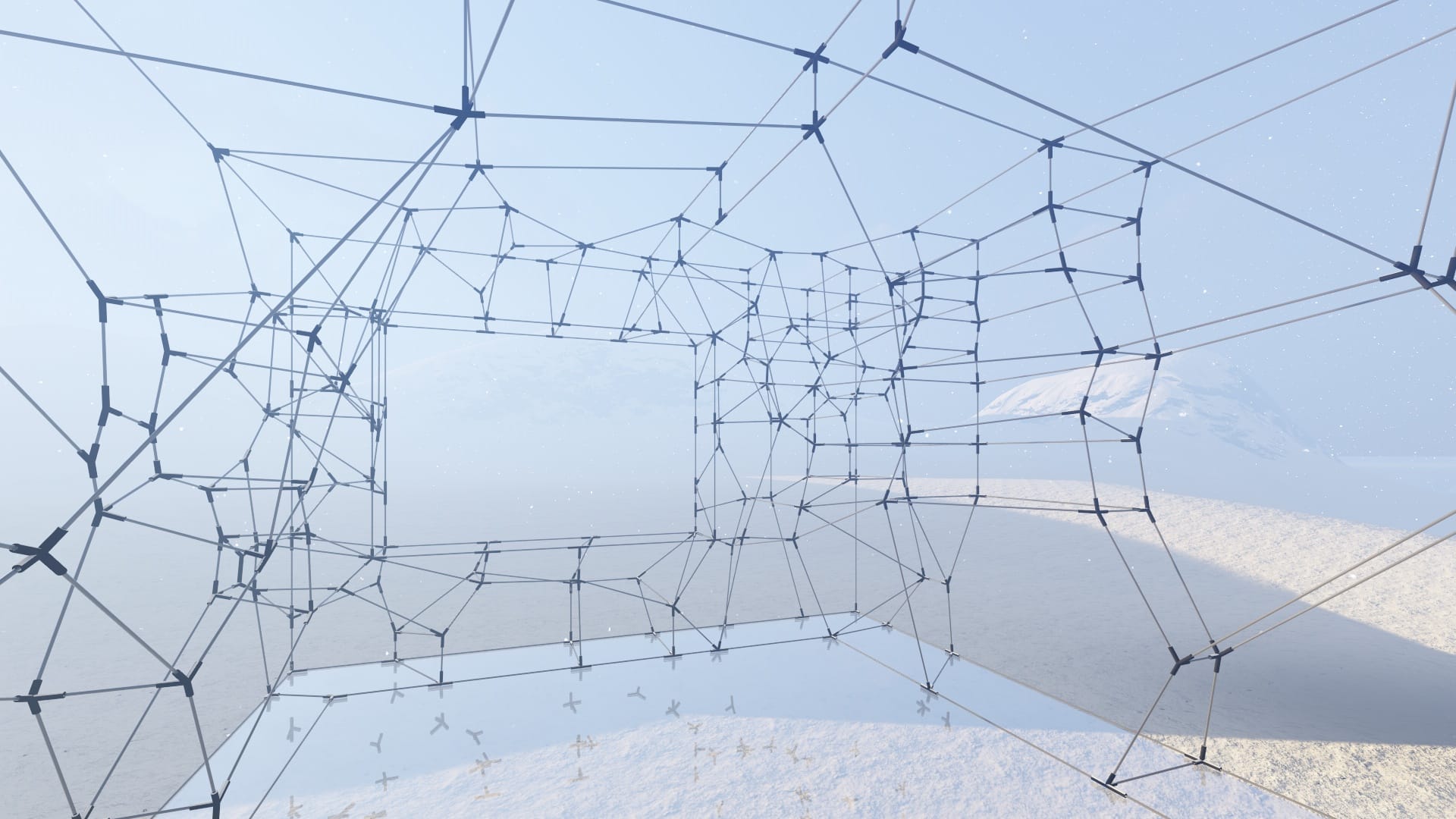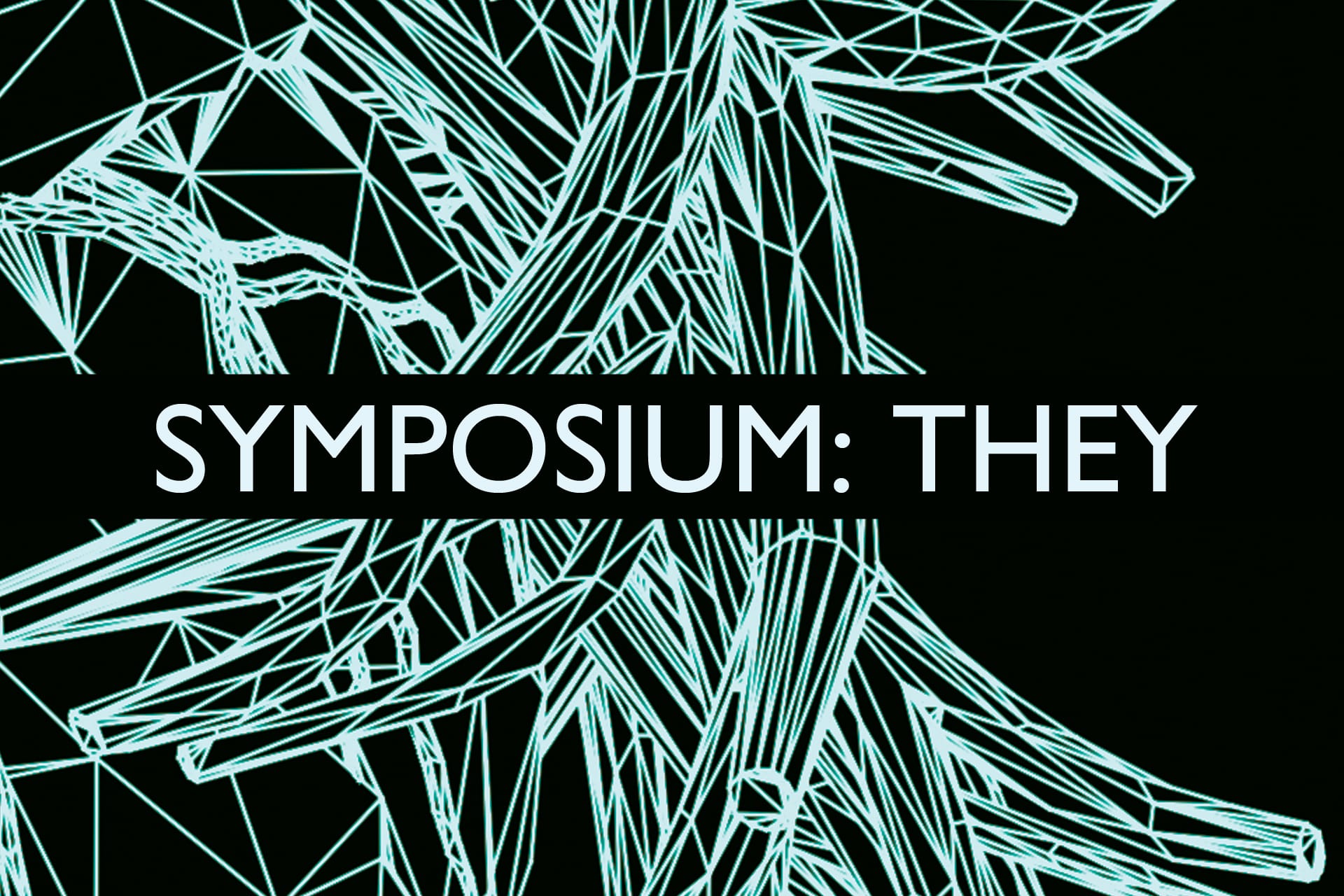
A.lter S.essio (FR/JP): LOSS | LAYERS
Modern Body Festival proudly presents the Dutch premiere of A.lter S.essio!
LOSS | LAYERS is an audiovisual dance performance diptych questioning situations of loss (of balance, reference, control, identity) in a hostile environment. The performance occurs in a restrained setting, in which the choreographed body confronts a pervasive and oppressive audiovisual space. This clash unfolds in different time spans, contracting, expanding, constantly accelerating. With nothing to hold onto in a moving world, the body becomes overly active to respond to pressure, or slows down to overcome paralyzing states and its intense surroundings. The image mingles with the body. The gaze navigates between illusion and reality. Uncertainty and disorder sets in, pushing the audience to resist or accept it.
In LOSS, the fragile body, initially at one with the audiovisual environment, breaks away little by little, reaching a climax of excruciating noise and a mechanical disjointedness. The result reveals a dark and powerful universe in which we feel the invisible pull of acceleration, profusion and negation of the human being. A character comes to life, grows and begins the desperate combat until destruction.
In LAYERS, senses, energy and matter are one and the same. First, a sudden glare, then the slow, dark progression towards the next breakdown or dead-end. The difficulty resides not so much on the transition but in the reaction of the human faced with change. How to carry on? Perhaps it is simply a question of point of view. Every emotion, every paralysis becomes movement, built on its own ruins. Resurgence, erasure, lassitude, advancement, resistance and tenacity become its articulations.
Concept, direction, audio & visual creation: Fabrice Planquette
Choreography, performance: Yum Keiko Takayama
Costumes: Yum Keiko Takayama, Yoko Higashino
Drawing: Matthieu Levet, Cécile Attagnant
Guitar: Pierre Fruchard
BIOS
A.lter S.essio (FR/JP) is an artist collective founded by Fabrice Planquette in 1998 (conception, direction, audiovisual creation), and joined in 2007 by Yum Keiko Takayama (choreography, performance). The group creates dance-performances and installations, simultaneously brutal and subtle, mixing contemporary and neo-butoh dance with audiovisual digital research and development, treating each component (body, image, sound, text) in equal terms. Through their work, they explore the place of the individual in society and question the conditions of contemporary existence. Live or survive, it is about fight, collapse, and play with a radical construction. A.lter S.essio has performed in most European countries, as well as in South America, Canada, and Japan in very diverse festivals. This will be their premiere in The Netherlands.
Fabrice Planquette works mainly as composer and sound designer in experimental music, sound poetry, installation and performance. He has collaborated with many dance and theatre companies since 1997. He was awarded the 2006 Villa Kujoyama grant in Kyoto (Japan). In 2007, he begun a series of performances in collaboration with international artists with the group A.lter S.essio, which he directs.
After learning classical ballet, modern and butoh dance, ‘Yum’ Keiko Takayama has been working on solo performances and collective projects (dance, theatre, photography). From 2000-2007 she toured extensively around the world with Japanese company Sennichimae Blue Sky Dance Club (neo-butoh). Her solo performances are similarly dedicated to non-theatre spaces. Since 2007, she is choreographer, performer and costume designer for the performing art group A.lter S.essio. She also leads workshops based on the idea of “having unlimited communication through out our limited body”.

Kasper Toeplitz & Myriam Gourfink (FR/PL): DATA_Noise
Modern Body Festival proudly presents the Dutch premiere of DATA_Noise!
DATA_Noise is a mixed media live performance by composer Kasper T. Toeplitz and choreographer Myriam Gourfink in which the moving body is seen as another musician/instrument, albeit a silent one. Or perhaps not so silent. In fact, at times a very noisy one. The piece is conceived as an electronic musical composition, to be played in real-time, by a musician playing a computer, whose music-making function is disturbed by a dancer, whose body, equipped with sensors, works extremely slowly and meticulously through a precise choreography, producing the “data-noise” which is meant to perturb the sometimes too-perfect actions of the computer.
DATA_Noise was awarded the Giga-Hertz Prize (ZKM, Karlsruhe) for Dance and Multimedia.
Concept, music, programming: Kasper T. Toeplitz
Choreography, dance: Myriam Gourfink
Photographs © Marc Coudrais
Mixed media performance
Date
3 Dec
Time
20:30-21:30
Venue
De Nieuwe Regentes
Grote Zaal
Module
Performance
BIOS

As a composer and electric bass player, Kasper Toeplitz (FR/PL) has developed a body of work in the no-man’s-land between “academic” composition (orchestra, ensembles, opera), electronic music, and sheer noise. Known for collaborating with such unclassificable musicians as Zbigniew Karkowski, Dror Feiler, Art Zoyd, Eliane Radigue, Phill Niblock and Ulrich Krieger, Toeplitz makes use of the computer both as a real instrument and as a tool for reflecting on music differently, transforming the musical parameters of pitch data and temporality. He has created works for radio and electronic studios such as IRCAM, GRM and GMEM. Some of Toeplitz’s awarded distinctions and prizes include 1st prize for orchestral composition at the Besancon Festival, 1st prize at the “Opera autrement / centre Acanthes” competition, Villa Medicis Hors les Murs (New York), grant Leonardo da Vinci (San Francisco), Villa Kujoyama (Kyoto), DAAD (Berlin), Hors les murs (Poland), Giga Hertz Prize (ZKM, Karlsruhe), Ars Elecrtronica (Linz).
Myriam Gourfink (FR) is known for her extremely unusual writing, based on Kinetography Laban, as well as her close connection with contemporary music and new digital technologies. Her dance is essentially infused with yoga and her experience as a performer (particularly with Odile Duboc). A leading figure in choreographic research in France, she has also been guest at numerous international festivals (springdance in NYC, Künsten Arts festival in Brussels, Festival de la Bâtie in Geneva, the Danças Na Cidade festival in Lisbon), and has been artist in residence at IRCAM, the National Fresnoy-studio for Contemporary Arts, the Forum de Blanc-Mesnil and Micdanses. From 2008-2013 she was director of the Program for Choreographic Research and Composition (PRCC) at the Royaumont Foundation. The performances she creates require extreme physical control resulting in a strange but boundless beauty. Every movement, every look, every breath is meticulously pre-determined to the millimetre, while the dancer’s body moves along a continuous, measured and fascinating path.

Utopian Body (CH/IT): La forme de l’âme
Modern Body Festival proudly presents the Dutch premiere of the Utopian Body project!

La forme de l’âme (The form of the soul) is a live performance piece inspired by the writings of Jean-Luc Nancy, one of the most important living philosophers. It is a multidisciplinary production, in which dance, video (as lighting creating solid spaces), electronic music, and the voice of Nancy himself reading his texts interact with each other to form a single organism. The invisible substance of the sound marks the tempo, the passage of time, in which the seasons of the body pass from birth, through life to death. The lighting, made solid by smoke, is charged with the task of designing the spaces inhabited by the body: Light and Body come alive, divide, follow each other only to disappear into nothingness. “Thereby the body dies and carries its secret to the grave, leaving only the slightest hint of its passing”. (Jean-Luc Nancy).
The vision of the body, of the naked body, is at once reassuring and obscene. Reassuring because it is familiar but at the same time, as spectators, it reminds us of our own bodies. As ruthlessly put by Michel Foucault, “I may as well go the ends of the earth, hide under my covers in the morning, melt in the sun on a beach, he [the body] will always be where I am. My body is the place to which I am condemned without appeal.” The performance courageously stages the tragic reality of the limits and finality into which we are thrown and the mystery toward which we are inexorably led.
Direction, video projection: Fabrizio Rosso (CH/IT)
Dance, choreography: Elena Boillat (CH)
Music, sound projection: Nadir Vassena (CH)
Text, voice: Jean-Luc Nancy
Multidisciplinary integrated performance (dance, video, music)
Date
2 Dec
Time
22:15-23:00
Venue
De Nieuwe Regentes
Grote Zaal
Module
Performance
BIOS
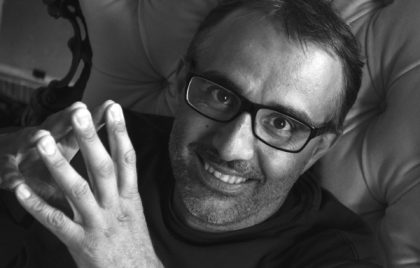
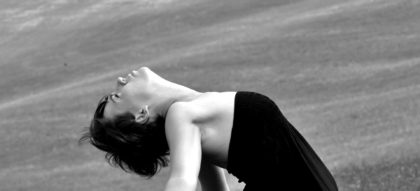
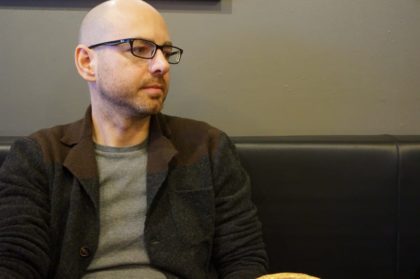
Fabrizio Rosso (CH/IT) has been focusing on creating and directing performances, films and pieces of music-theatre. He studied music at the conservatoires of Turin, Zürich, Lugano and film direction at the USC School of Cinematic Art, Los Angeles (US). In 2004 he collaborated with Karlheinz Stockhausen on several projects including the premiere of Sonntags-Abschied, the last piece of the LICHT cycle Operas. He directed and collaborated to create several projects in various locations including: Berliner Festspiele, Piccolo Teatro (Milano), Teatro Manzoni (Bologna), Tonhalle Zürich, Biennale Venezia. In 2014 he directed the performance La Extravagancia #0 by Rafael Spregelburd, which was selected for 2° Schweizer Theatertreffen. In 2015 his short movie New Incessantly Endless won “Best Religious and Spiritual Award” at Great Lakes International Film Festival, Pennsylvania (US).
Elena Boillat (CH/IT) is a performer and choreographer. After studying contemporary dance and Butoh in Tuscany, and obtaining a degree in Art studies and Performing arts at the University of Florence, Elena attended the studio at the School of Theatre Dance and Dramatic Arts Paolo Grassi in Milan, graduating as a dancer and performer, and working with international choreographers like Jonah Bokaer, Cesc Gelabert, Dominique Dupuy and the playwright and director Dario Fo. She has created motion performances in collaboration with the Conservatory of Italian Switzerland and other artistic companies, in Switzerland and abroad, working for several productions with experimental directors. A member of DANZA SIA (Swiss Italian Dancers), Elena is also a founding member of the Theater company DOMESTICALCHIMIA.
Nadir Vassena (CH) is a composer from Lugano. He has received numerous invitations to renowned festivals for new music and received many accolades, such as the West German Radio competition in 1992, the Music Institute of the ‘Hochschule der Künste’ in Berlin 1994 (first prize ex aequo), the Mozart Competition in Salzburg 1997, and the Christoph-Delz Foundation Prize. Nadir was a scholar of the ‘Akademie Schloss Solitude’ in Stuttgart in 2000/2001, of the ‘Denkmalschmiede Hogen/Margarethen Foundation’ in 2002, and a member of the Swiss Institute in Rome 2002/2003. In 2015 he was nominated for the Swiss Music Prize. Nadir Vassena, together with Mats Scheidegger, was artistic director of the ‘tage für neue musik zürich’ (2004-2012). He is Professor of Composition at the ‘Conservatorio della Svizzera italiana’.

Atau Tanaka (UK/US): Music One Participates In | Myogram
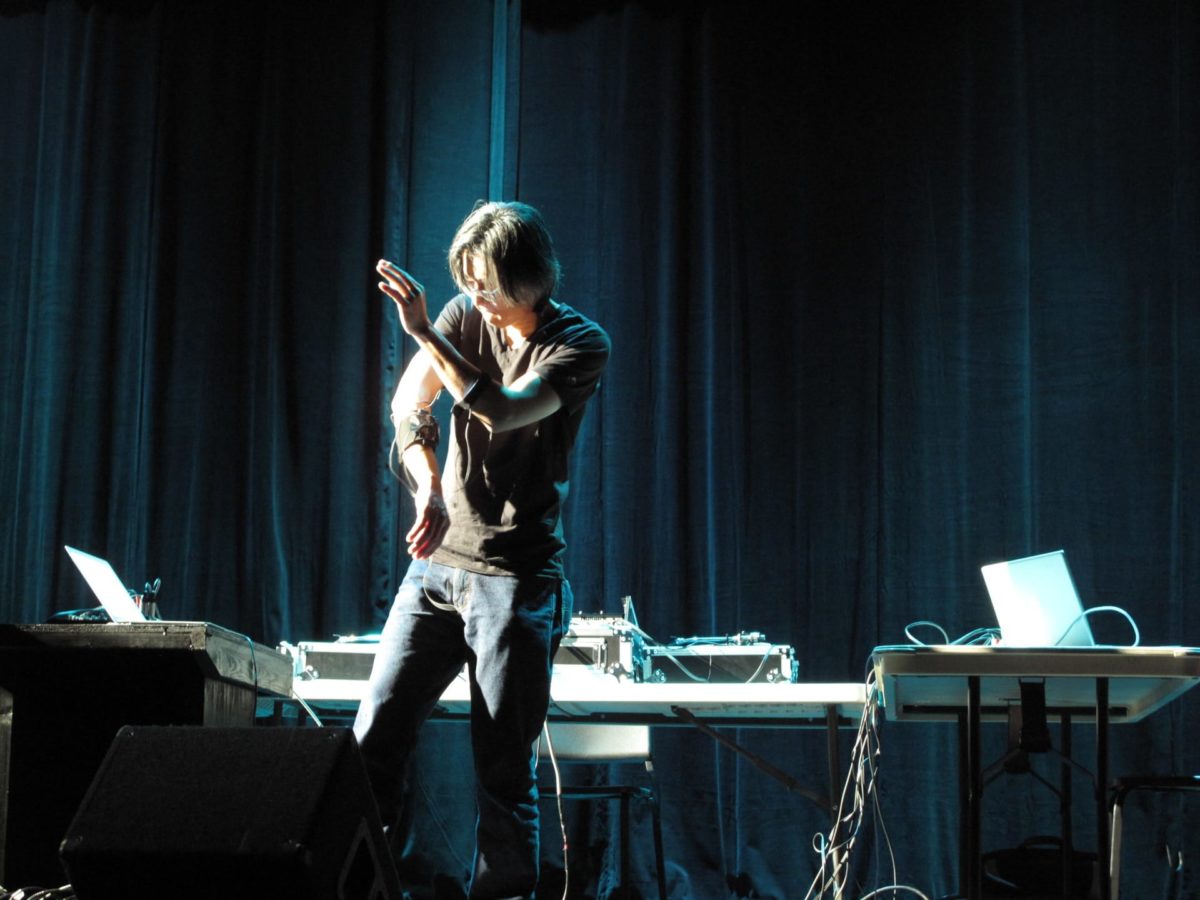
Music One Participates In: From Stage to Street to Pocket
Digital music has undergone fundamental shifts – it has gone real time, it has become interactive, it has become miniaturized, and completely democratized. Mapping out his personal trajectory during this time, renowned artist and researcher Atau Tanaka presents a lecture/performance looking at broader evolutions in the field of digital music with sensors, networks, and mobility. He addresses not only technological changes, but changes that bring about shifts in musical approaches. Form factors change, analogue is reconciled with digital, and new directions in Open Source and DIY culture continue to challenge our assumptions on what it means to be an artist, composer, performer, participant, in these evolving musical/technological landscapes.
Le Loup, Lifting, Myogram
The concert performance is for performer and the Myo bio-electrical interface as musical instrument. The instrument captures electromyogram (EMG) signals reflecting muscle tension. Live sound synthesis software programmed by the composer creates mappings that shape and sculpt sound parameters, filtering, granularizing, distorting electronic sounds in ways not possible with conventional interfaces. The system renders as musical instrument the performer’s own body, allowing him to articulate sound through concentrated gesture. The sources are natural and synthetic sounds, and sounds of the body.
Lecture-performance
Date
3 Dec
Time
19:00-20:00
Venue
De Nieuwe Regentes
Grote Zaal
Module
Performance
Links
Website
BIO

Atau Tanaka (UK/US) bridges the fields of experimental music, media art, and scientific research in embodied human-computer interaction. He is widely known for his pioneering works for sensor-based instruments and bio-signals, mobile infrastructures, and democratized digital forms. His first inspirations came upon meeting John Cage during his Norton Lectures at Harvard. Atau then studied at CCRMA Stanford, and conducted research in Paris at IRCAM, Centre Pompidou. He formed Sensorband with Zbigniew Karkowski and Edwin van der Heide and then worked in Japan, performing with Merzbow, Otomo, and KK Null. He re-staged Cage’s Variations VII with Matt Wand and :zoviet*france:. His work has been presented at NTT/ICC Tokyo, Ars Electronica, ZKM, Transmediale, Eyebeam, Wood Street Gallery, SFMOMA, and the Southbank Centre, and has had CD releases on labels such as Sub Rosa, Bip-hop, Caipirinha Music, Touch/Ash, Sonoris, Sirr-ecords. He has been researcher at Sony Computer Science Laboratory Paris and Artistic Co-Director of STEIM. He is Professor of Media Computing at Goldsmiths, University of London.

Mo H Zareei (NZ/IR): The Brutalist Noise Ensemble
Modern Body Festival proudly presents the European premiere of The Brutalist Noise Ensemble!
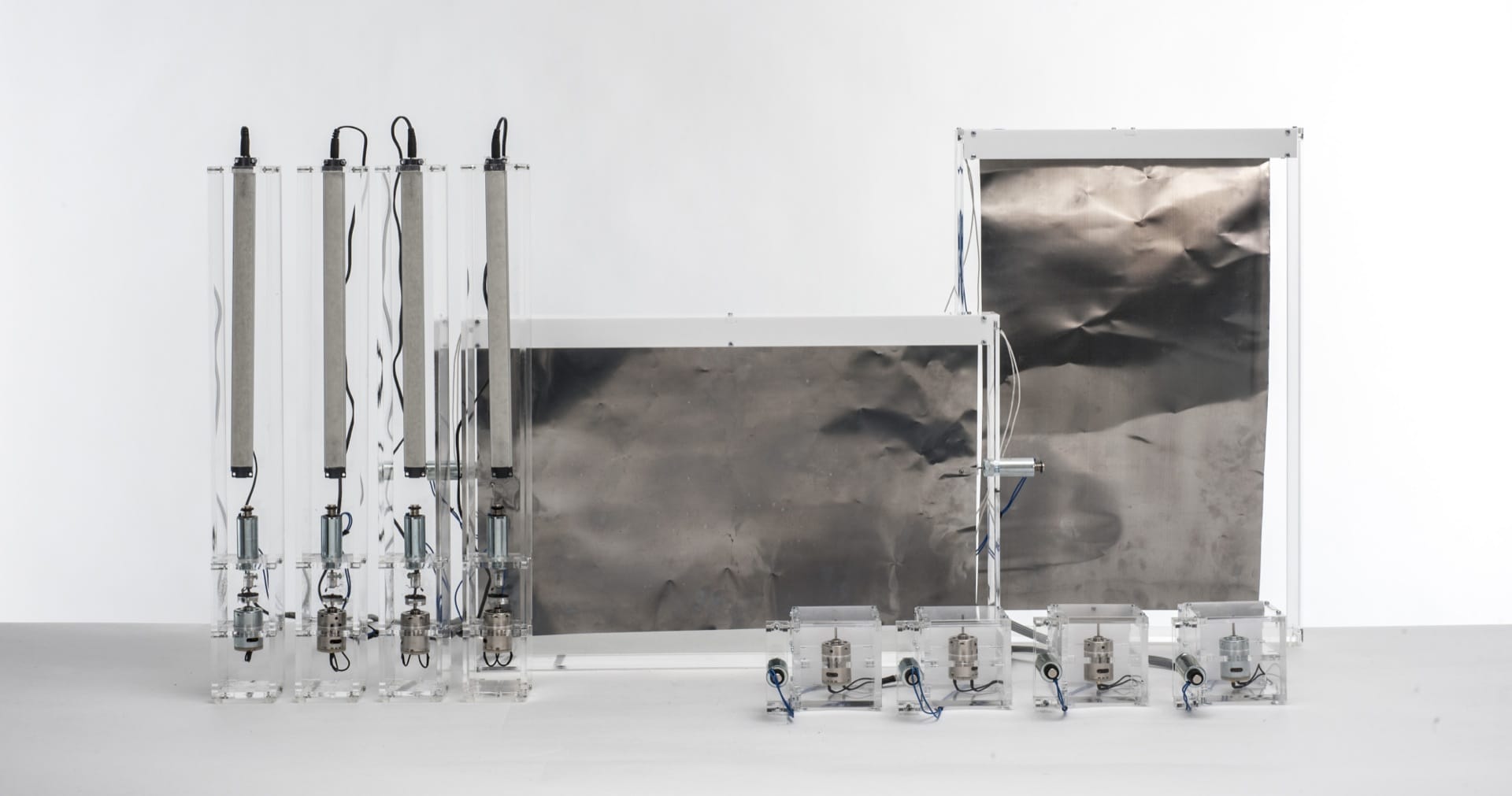
The Brutalist Noise Ensemble is an audiovisual performance composed for a series of sound-sculptures, aiming to highlight the potential aesthetics of some normally-ignored aural/visual phenomena of the urban life. The sound-sculptures are comprised of “non-musical” objects: electromechanical motors, actuators, bits and pieces of metal. By presenting its “non-beautiful” raw material in sculpture forms, the ensemble takes them through an aesthetic transformation inspired by the Brutalist architecture ethos. This transformation is completed with the help of mechatronics and microcontroller programming, affording the instruments the ability to create precise and repetitive patterns and motions. Limited to right angles, cubes, and rectangles, the instruments are designed for function alone, leaving no room for ornamental features in their strikingly reductionist appearance. This austere visual quality is further highlighted through bursts of fluorescent light, which in negotiating a fine line between the mesmerising and the uncomfortable, intensify the sensory experience of the work in a fully visceral manner.
Audiovisual performance
Date
2 Dec
Time
20:15-20:45
Venue
De Nieuwe Regentes
Grote Zaal
Module
Performance
Links
Website
BIO
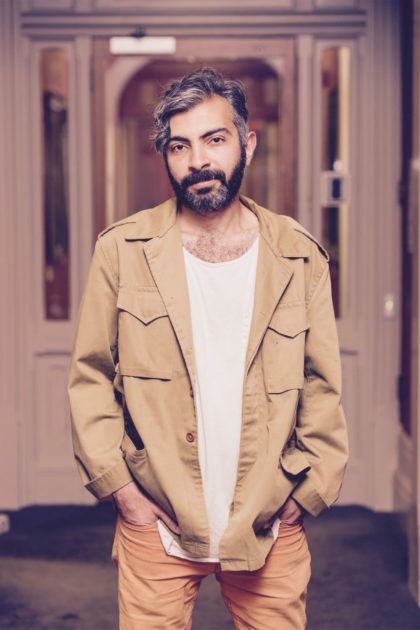
Mo H. Zareei aka mHz is an electronic musician, sound artist and researcher. Using custom-built software and hardware, his experiments with sound range from electronic music to kinetic sound-sculpture and audiovisual installations. Regardless of the medium, Zareei’s work is particularly targeted at the point where noise meets grid-based structures. He has exhibited his work at several international events including the International Symposium on Electronic Art, New Interfaces for Musical Expression, and Wellington Lux. Zareei’s sound-sculptures have been featured on Streaming Museum, Creative Applications, and Creators Project. His installation “Rasping Music” received the 1st prize for Sound Art in the Sonic Arts Award 2015. Zareei holds a B.S. in Physics from Shahid Beheshti university of Tehran and a BFA. in music technology from California Institute of the Arts. He recently completed his Ph.D. on the intersections of Brutalism and sound art at Victoria University of Wellington, where he now lectures.

Stephanie Pan (NL/US): Implosion
Modern Body Festival proudly presents the premiere of Implosion!
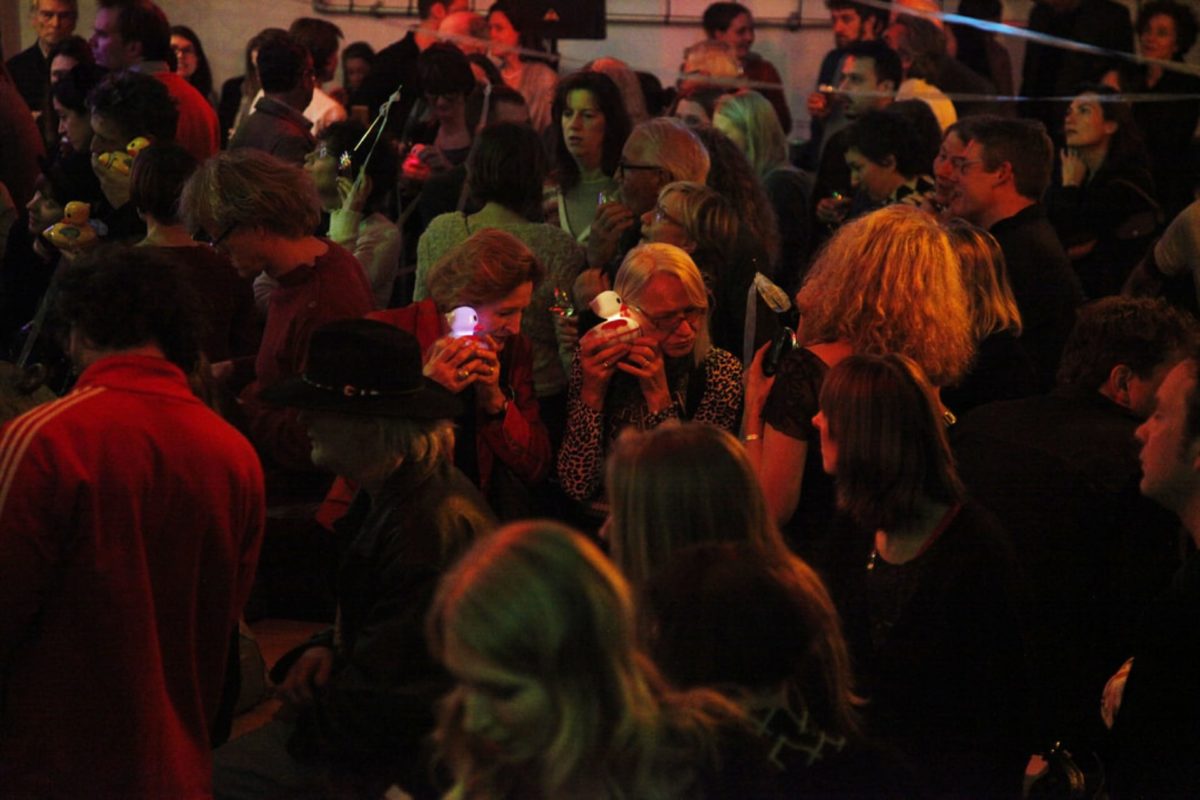
Using found objects, baby synthesizers, toys and her voice as instruments, Stephanie Pan will create a playful and intimate performance, together with the audience. A participatory music performance that submerges the public in a soundworld of their own making.
Participatory sound performance
Date
2 Dec
Time
21:15-21:45
Venue
De Nieuwe Regentes
Grote Zaal
Module
Performance
Participatory
Links
Website
BIO
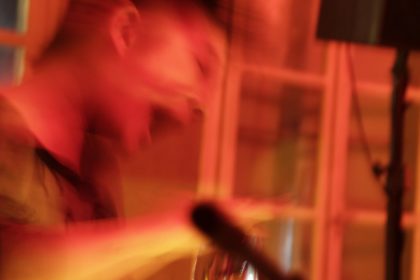
Stephanie Pan is a vocalist and multi-instrumentalist, performance artist, and maker based in The Hague, specializing in experimental music, new music, and experimental theater. Her work is rooted in the search for pure communication; finding contact with the audience stripped of expectations and distractions, which speaks beyond the conventional limitations and constructs of language. Her work is visceral, passionate and intense, often exploring the limits of the voice and body. Stephanie has performed extensively throughout the US and Europe. She holds a Masters in Theatre from DasArts (AHK), BA from UC Berkeley in Music and Applied Mathematics, and First Phase Diploma, with distinction, in Classical Singing from The Royal Conservatory, The Hague. Besides her solo work, she has co-founded several numerous music project, and most recently the intermedial Modern Body Festival.

Jeroen van Ameijde & Luis Rodil-Fernández (UK/NL/ES): Flow
Flow is an installation that was produced during a workshop in Space Media Festival Taipei (August 2016), organized by Dezact (UK) and Modern Body Festival (NL). It is the result of the first-time collaboration by an architect and a media artist who developed an integrated conceptual approach for a design methodology and set of material and technology systems for a new work produced on-site.
The workshop and installation departed from a kinesiological understanding of space, where a specific ‘parkour’ movement through the site was traced and translated to guide the overall configuration of a modular installation. Through its formation and interactive lighting, the installation sought to provoke alternative readings on use of urban spaces and invited active participation by visitors, aiming to stimulate movement and flow through the project’s site.
The installation is conceived as a custom designed component system, using plug and play 3D-printed modules connected by polycarbonate tubing of different lengths to create different densities within the overall formation. The nodes contain microprocessors, LED’s and light sensors to enable specific patterns of dynamic lighting behaviours, triggered by movements of the people underneath.
Design coordination: Jeroen van Ameijde & Luis Rodil-Fernández
Design, fabrication and construction assistance: Space Media Festival workshop participants
Interaction design and fabrication: Luis Rodil-Fernández with Howard Chen
3D Printing coordination: Jeroen van Ameijde / Sean Wu / See Chin Liang
Supported by the National Taipei University of Science and Technology (NTUST).
Commissioned for Space Media Festival 2016 (Taipei) and Modern Body Festival 2016 (The Hague).
Interactive installation
Date
December 2-3
Time
12:00 – 20:00
Venue
Pavilloen Baruch (Gemak)
Module
Exhibition
MBF x DEZACT
Weblinks
Jeroen van Ameijde
Luis Rodil-Fernández
Workshop: THEY – Form in motion
BIOS

Jeroen van Ameijde (UK/NL) has been involved with academic activities at the Delft University of Technology, University of Pennsylvania, the AA and many other institutions in various capacities for more than ten years. His current research covers digital design, innovative construction technologies and contemporary urbanism. Summarised under the term ‘generative design’, he investigates new methodologies to incorporate detailed information and simulations of the multiple functionalities of possible design solutions. His research considers the contemporary city as a complex system of interrelated networks of material, social and cultural exchange, using the analogy to natural ecosystems to understand the relationships between physical environments and the enabling of many interactions at different scales and periods of time.

Luis Rodil-Fernández (NL/ES) is an artist, researcher, teacher and hacker. His work is concerned with the impact that technologies have on cognition and the human body with particular emphasis in movement and embodied interfaces. Through performances, installations and social games, his work proposes a critical approach to human-computer interactions rooted in movement. He is part of the Qualified Self project, an international research-creation program that aims at exploring the expressive potential of the new wave of biosensing technologies that are marketed under the moniker of Quantified Self. Luis is also co-founder of Algo Research Systems, a platform for researchers, curators and artists that investigate how the increasing automation of society alters the social order, creates mythical narratives around technologies and subjects the human to systematic automatisms. Luis studied Computer Science in Spain, and earned a BA in the Rietveld Academy in Amsterdam and a Masters in after studying Art Science at KABK in The Hague.

Shih Wei-Chieh, Manuel Jiménez García & Christina Dahdaleh (TWUK/ES/JO): The Woven Memory
How do we imprint our history in space? Drawings and sketches documenting history in housings and on cave walls can be found in many cultures, providing a path of communication between inhabitants of different times and generations.
‘Woven Memory’ is a light, medium-scale structure, constructed from digitally manipulating bamboo, a traditional building material in Taiwan. This modular space, designed by architects Manuel Jimenez Garcia and Christina Dahdaleh, uses a new way of computing flexible materials and is made by binding together single bamboo stalks to create a structural ecology. The linear pieces provide a framework for stretching fabrics to be later inscribed with laser-printed patterns. Reinterpreting old photography techniques, artist Shih Wei Chieh impregnates these fabrics with a photosensitive emulsion, and uses sound-controlled laser beams to slowly expose the developing chemical. With the emulsion on the fabric remaining active, the exposure continues throughout the duration of the exhibition, leaving marks that visualize the passage of time, and the decay of memory.
The main structure in the exhibition was created in Taipei, and built with the collaboration of Space Media Festival workshop participants who manually bent and assembled hundreds of pieces of bamboo. A similar smaller structure fabricated in London with industrial robots accompanies it, offering a counterpoint between human-made vs machine-made.
Shih Wei Chieh will give two live audio-visual performances, laser inscribing the photosensitive structure, and marking the beginning of the decay of memory (Dec 2 & 3).
Design team: Manuel Jiménez García, Wei Chieh Shih, Christina Dahdaleh
Robotic manufacturing: Alvaro Lopez, Vicente Soler, Seiichi Suzuki Erazo
Manufacturing and assembly: Space Media Festival Taipei workshop participants
Project supported by: Dezact, Modern Body Festival, The Bartlett School of Architecture UCL
Commissioned for Space Media Festival 2016 (Taipei) and Modern Body Festival 2016 (The Hague).
Architectural installation &
2 audiovisual performances
Date
December 2-3
Time
12:00 – 20:00 (exhibition)
2 Dec, 17:00-17:30 (performance)
3 Dec, 17:00-17:30 (performance)
Venue
Pavilloen Baruch (Gemak)
Module
Exhibition
MBF x DEZACT
Weblinks
Manuel Jiménez García
Shih Wei-Chieh
Workshop: I – Encoding Flexible Data
BIOS
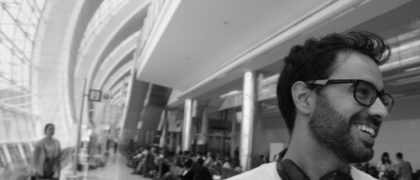
Manuel Jiménez García (UK/ES) is currently Co-Director of MereoLab Research Lab at The Bartlett School of Architecture (UCL)(London). He is also Course Master of Research Cluster 4 at the MArch Graduate Architectural Design (GAD) and Unit Master of MArch Unit 19; in addition, Manuel is curator of the Bartlett Computational Plexus, Coordinator of the BPro Skills Elective Module and Programme Director at the Architectural Association’s Visiting School in Madrid (AAVSM). He has taught and run workshops at Architectural Association’s Design Research Laboratory (AADRL, London), Polytechnic University of Architecture (Madrid), European University Madrid, and L’École Spéciale d’Architecture (Paris). Manuel is the co-founder of Ctrl+M and madMdesign, an architecture practice based in London. He has also worked internationally as an architect for Rogers Stirk Harbour + Partners, Minimaforms, Amid(cero9) and Naja & deOstos. His work has been featured widely in Acadia 2012 (San Francisco), Royal Academy Summer Exhibition (London), X Bienal Española de Arquitectura (Spain), and Rethinking the Human in Technology Driven Architecture 2011 (Greece).

Shih Wei-Chieh (TW) is a media artist, e-textile prototype designer and material researcher. He graduated from Media Communication Design of Taipei Shih Chien University in 2010 and now works as an artist and e-textile consultant in Taipei. His work has been presented in many international platforms and festivals such as CTM Festival Berlin, SXSW Festival Texas, Adafruit NYU, Youfab Festival Tokyo. His material practice focuses on stretchable circuits for textiles, printed circuits, photoelectric chemicals and laser processing of materials. Following a funded 2-month long textile research residency in Mexico and 6-month long fair-trade collaboration with a local NGO (Bandui Lab) and Aztec groups 2013, he was inspired to work with traditional Taiwanese textile communities, and to explore the relation between traditional textile techniques, society, and new materials through technology.
Christina Dahdaleh (UK/JO) is a passionate and enthusiastic designer. She graduated from the Bartlett School of Architecture (UCL-London) with a Masters in Architecture, under Nannette Jackowski and Ricardo de Ostos, 2015. She holds first class honours for her Bachelor Degree in Architecture from the Kent School of Architecture, 2012. She currently teaches at the Bartlett School of Architecture, is program coordinator at the AA Visiting School of Madrid, and teaches a masters workshop at UEM. Christina also coordinates the Bartlett Plexus lecture series, an initiative to bring together the creative talent of different disciplines related to computation. Aside from teaching, she is part of the research team at MadMDesign (UK), and has worked at RTKL (UK), Guy Holloway architects (UK), Faris and Faris Architects (Jordan) and Jaafar Toukan Architecture (Jordan).

Satoru Sugihara (US/JP): Gem of Lives
Gem of Lives is a work inspired by the historical context of Toad Hill in Taipei, where it was first exhibited during Space Media Festival. Toad Hill is a site with a complex history, a contentious village which the residents built with the limited supplies and materials they had at hand. The piece wants to shine a light on the human aspect of this site – the daily lives of the residents, their memories with families and neighbors.
To reflect this context, the installation structure is built with the materials used in the DIY-style buildings of the site, such as corrugated plastics and wood studs. While the materials and the structure’s resemblance to a temporary shelter make a clear historical reference, the form and construction methods are distinctively contemporary, using generative systems, physics simulations, computational technology, and digital fabrication, presenting the idea of not mere preservation, but coevolution, where progress and heritage inform each other. The physical structure is designed by Satoru Sugihara, usin an agent-based computational design method, inspired by flocking birds and swarming insects, to embody emergent complexity. Echoing the design, a lighting and movement performance around and within the structure was performed in Taiwan, created by artist Mike Rijnierse, in collaboration with Satoru Sugihara and Space Media Festival workshop participants.
Commissioned for Space Media Festival 2016 (Taipei) and Modern Body Festival 2016 (The Hague).
Architectural installation
Date
December 2-3
Time
12:00 – 20:00
Venue
Pavilloen Baruch (Gemak)
Module
Exhibition
MBF x DEZACT
Weblinks
Satoru Sugihara
Workshop: WE – Agent-Based Choreographic Tactics
BIO
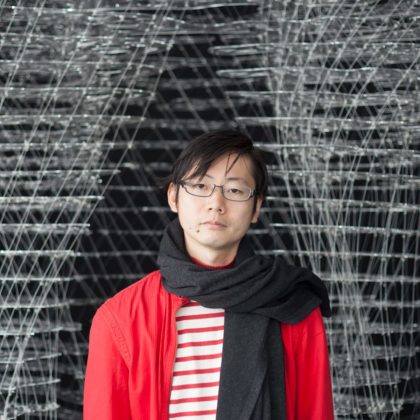
Satoru Sugihara (US/JP) is a leading computational designer working in the field of architecture, and a faculty member at Southern California Institute of Architecture. In 2012 he founded ATLV, a computational design firm based in Los Angeles. The studio pushes the boundaries of practice and research in contemporary architecture and spatial design, employing algorithms alongside electronic hardware and robotics to seek broader ideas of design, fabrication, and process. Prior to ATLV, Satoru worked as a computational designer at Morphosis Architects engaging in large-scale construction and research projects, and as a researcher in media art and interaction design. He is also the developer of open-source 3D computational design software iGeo. Satoru holds a Master’s degree in Architecture from University of California Los Angeles and a Master’s degree in Computer Science from Tokyo Institute of Technology. He has taught at Architectural Association’s Visiting School, the University of British Columbia, Ecole Nationale Supérieure d’Architecture de Paris-Malaquais, Woodbury University and Tokyo University of the Arts.

Tivon Rice & WeiHaw Wang (US/TW/JP): REGROWTH: For Toad Hill
The resulting installation can be seen not only as a document of the shape and texture of this situation, but also a reflection of our collaborative relationship with Toad Hill – which began in a highly virtualized space but ultimately converged upon the very real site. For the project’s texture, we use photogrammetry, a technique which analyzes adjacent site photos to establish their depth dimension and ultimately merges large amount of information into a textured, 3D map. These photos were taken both from the ground as well as from an aerial platform, a drone. For the shape, we established a system (conceptually trying to mimic what photogrammetry does) that converts meshed faces into a controllable density of rods and hubs. The system merges small meshes into large ones, or subdivides large mesh into small ones.
Commissioned for Space Media Festival 2016 (Taipei) and Modern Body Festival 2016 (The Hague).
Installation: Acrylic, 3d printed polyethylene, photogrammetric digital animation, sound
Date
2 & 3 December
Time
12h-20h
Venue
Paviljoen Baruch (Gemak)
Module
Exhibition
MBF x DEZACT
Links
Tivon Rice
Wei-Haw Wang
BIOS
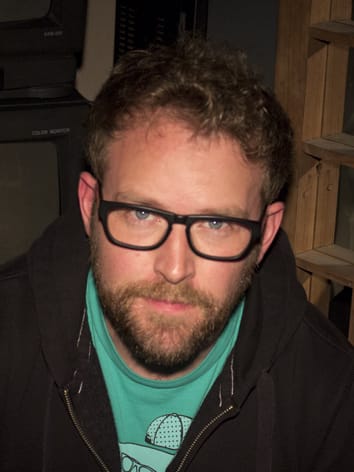
Tivon Rice‘s (US) work critically explores representation and communication in the context of digital technologies. Both fascinated with and wary of the speed of televisual media, Rice creates systems that pair immediate materials such as light, space, and tangible forms with live and recorded sound and video. While his practice is primarily concerned with emerging social relationships to digital technology, Rice draws heavily from art historical themes. In doing so, he examines the conditions of surrealist and minimalist attitudes in contemporary new-media arts. Rice is a 2011-12 Fulbright Scholar, and a PhD candidate at the University of Washington’s Center for Digital Art and Experimental Media, where he teaches courses in Video Art and Installation.
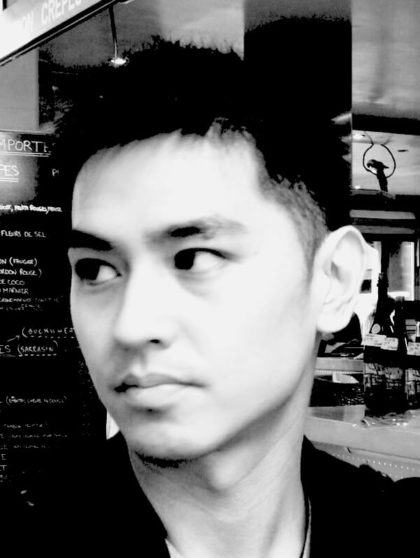
Wei-Haw Wang (TW/JP/UK) is a Taiwanese-born British architect who has spent most of his professional career in the UK. He is currently based in Taiwan and Japan, and is the director of Sawara architectural firm. While his private practice deals with smaller residential projects, he also provides technical consultation for the parametric and computational departments of other architectural corporations. He has conducted computational design workshops for MTech, Architectural Association (AA), and London Metropolitan University in 2009. While at KPF London, he also worked on various architectural projects involving parametric design – an airport terminal, a football stadium, a mixed-use high rise, and private space installations. Wei-Haw graduated with an MArch from The Bartlett School of Architecture in London (UCL).

Yolanda Uriz Elizalde (ES/NL): Maziterido
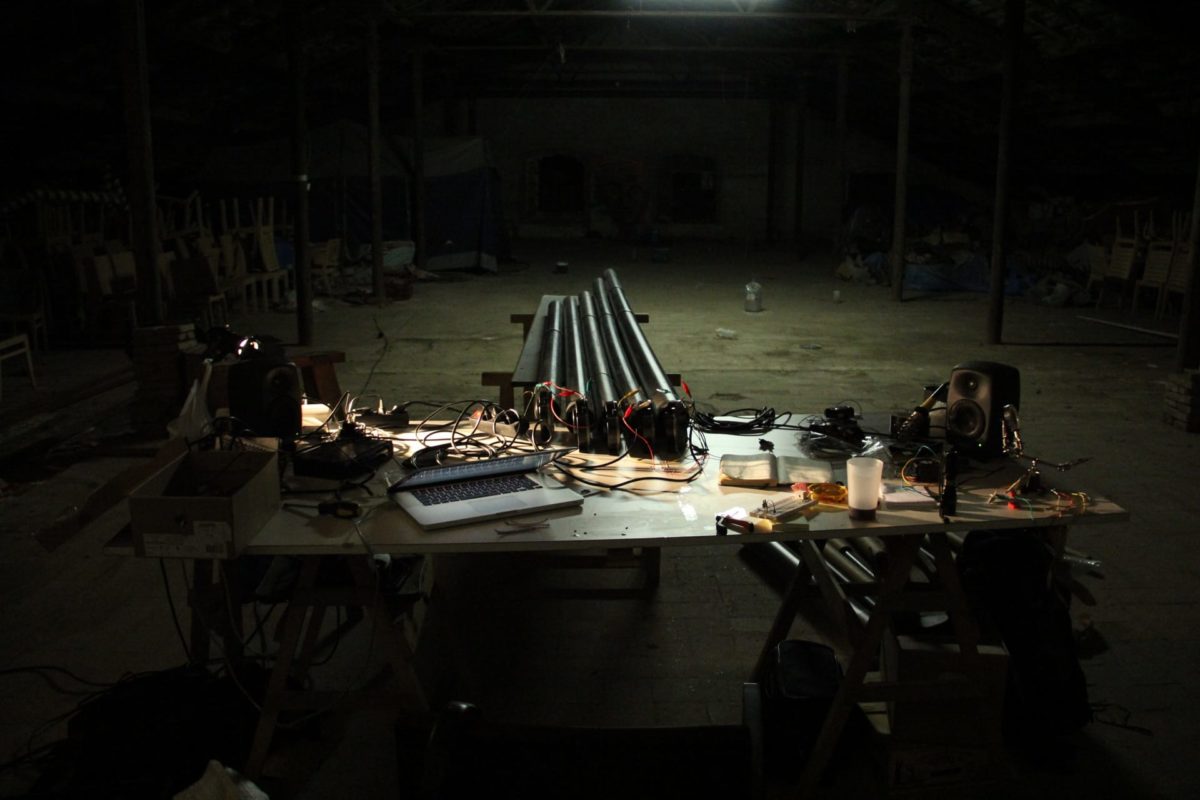
Maziterido explores synesthetic connections through smell, space and sound, proposing a multi-sensorial experience with a special emphasis on smell. It is a labyrinthian environment where to navigate through streams of aromas and tones that surprises the audience inside a mysterious and foggy space. Visitors discover the different elements of the installation, as they get closer to them, while they trace their own map moved by their individual impulses.
Below you can listen to a piece by Yolanda Uriz composed using an earlier iteration of her labyrinth.
Multi-sensory installation
Date
2 & 3 December
Time
12h-20h
Venue
De Nieuwe Regentes
Kleine Zaal
Module
Exhibition
Sense Immersion
Links
Website
BIO
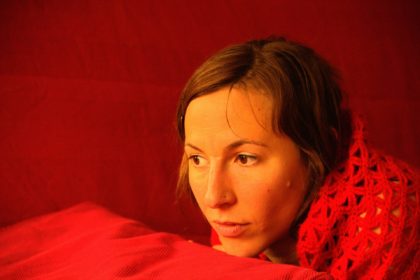
With a particular interest in the lower senses (smell, taste and touch), not only on their aesthetic potential, but also on their implication in politics, genre and perception, Yolanda Uriz´s (ES/NL) work is an amalgam of elements from sound art, visual arts, inspiration from science and techniques from new media-art. It materializes in installations and performances for multi sensory immersive experiences, that have been presented in Spain, The Netherlands, Germany, Poland, Portugal, Estonia, Latvia, Rusia, Austria, Italy, Slovenia, France, UK, US, Belgium and Greece, at festivals like Sonic Acts (NL), WRO Media-Art Biennale (PL), Kontraste (AU), STRP (NL), SPARK (US), Todays Art (NL//RU), Oddstream (NL).

Mischa Daams (NL): Respire
Undulating wind cycles animate the size and motion of a tunnel, like a lung that fills itself with air. Slowly expanding and contracting, it opens up and closes its audience in. Captured participants are moved around and captivated by a kaleidoscopic display of wind patterns, vividly modulating reflections of light coming in from both ends of the tunnel. A fascination for the way in which space affects us started this project. By shaping a perceptual environment constantly changing form and size over time, Respire intends to affect, activate and negotiate with its beholder. Respire, or breathing, symbolizes the interwoven relationship between physical phenomena, digital algorithms and the subjective process that transforms those stimuli into a personal experience. The tunnel serves as a metaphor for the way in which we perceive, interpret and project back onto our surroundings as we experience them.
Immersive installation
Date
2 & 3 December
Time
12h-20h
Venue
De Nieuwe Regentes
Het Diepe
Module
Exhibition
Sense Immersion
Links
Website
BIO

Mischa Daams (NL) is an interdisciplinary artist from The Hague. After a BA in Multimedia Design, in 2013 he finished his MA in the ArtScience Interfaculty, at the KABK and the Royal Conservatoire in The Hague. Daams approaches his works as ‘open systems’ that explore and unfold relationships of control and co-dependence between technology, perception, consciousness, the human (body) and space. Often-times this takes form in hypnotizing experiential environments, performances and films in which simple choreographies convey complex behavioral patterns in diverse media such as kinetic motion, moving images, light and sound. For his newest project Origin, Daams is researching motion control to develop a kinetic video installation that performs an abstract endless film. Daams was recently artist-in-residence at Art Center Nabi in Seoul, South Korea. There he started exploring robotics to precisely study, manipulate and control this emergent material.

Stelios Manousakis & Ping-Hsiang Chen (NL/GR/UK/TW): The water within (Hertzian Field #3)
Created for Modern Body Festival 2016: I/WE/THEY (The Hague).
Concept, interaction, sound, programming, steam: Stelios Manousakis
Space design: Ping-Hsiang Chen, Stelios Manousakis
Skin design & fabrication: Stephanie Pan
Speaker cabin design: Dionysis Manousakis, Stelios Manousakis
Fabrication: Ping-Hsiang Chen, Dave Kalle, Gijs Thermorshuizen, Djurre Kooistra, Johannes Fischer, Stelios Manousakis
Reactive sound, steam & electromagnetic environmennt
Date
2 & 3 December
Time
12h-20h
Venue
Paviljoen Baruch (Gemak)
Module
Exhibition
MBF x DEZACT
Sauna Series
Sense Immersion
BIOS

Stelios Manousakis (NL/GR) is an artist exploring relationships between time, space, body, system, and sound. His work is particularly concerned with the invisible and the ephemeral, and with shaping sensation, perception and experience in time. His practice lies in the convergence zones of art, philosophy, science and engineering; it extends from performances, to environments and interactive installations, to compositions, fixed media pieces, and film music. Besides his solo work, he has co-founded several music and multimedia groups, and most recently the intermedial Modern Body Festival. Stelios studied music and linguistics in Greece, Sonology in the Netherlands, and is currently finishing a PhD in Visual and Performing Arts at the Center for Digital Arts and Experimental Media.

Ping-Hsiang Chen (UK/TW) is an architect and computational designer specializing in parametric design, environmental simulation and multi-media communication in London. Ping-Hsiang completed his RIBA Part 1 and Part2 at AA school of Architecture and has a master degree in Architecture and Digital Media at the University of Westminster, London. He is the co-founder of DEZACT and founder of [IN] Morph Lab, a research based studio where he explores computational design, digital media and fabrication in architecture. He has taught computational design and design studio at Shih Chein University in Taiwan, and AA visiting school in Israel. He is a workshop teaching fellow at Digital Prototyping Lab at Architectural Association School of Architecture and a digital fabrication consultant across UK and Taiwan. His architectural- and art-works have been showcased and exhibited internationally.

Hot Listening Booth feat. audio-DH
Modern Body Festival is proud to present the Hot Listening Booth! Working to both fight off winter as well as the lonely outposts that are so often listening stations, Stelios Manousakis and Stephanie Pan introduce their infrared sauna listening booth, featuring 250 artists, their 195 compositions, and HARING, aka the audio-DH project, by Francisco Lopez and produced by iii. Broadcast over speakers in the 3-person sauna, we welcome you to come enjoy the experimental sound of The Hague while warming your flesh and bones.
Hot Listening Booth: Stelios Manousakis & Stephanie Pan
Broadcasting: Audio-DH, Featuring 250 artists over 195 compositions & HARING
Audio-DH credits:
Concept & Direction: Francisco López
General Coordination: Barbara Ellison
Production: iii
HARING Software Development: Andrea Vogrig & Darien Brito
Invited curators (in alphabetical order): Anne Wellmer, Aurélie Lierman, Barbara Ellison, Bjarni Gunnarsson, Bronne Keesmaat, Dario Giustarini, Dewi de Vree, Dmitry Gelfand, Domenico Sciajno, Donia Jourabchi, Evelina Domnitch, Ezequiel Menalled, Fani Konstantinidou, Henry Vega, Ingrid Lee, Jacqueline Heerema, Jan Trützschler von Falkenstein, Ji Youn Kang, Jonas Ohlsson, Judith Schoneveld, Justin Bennett, Kacper Ziemianin, Kees Tazelaar, Leo Svirsky, Ludmila Rodrigues, Marie Guilleray, Martijn Verlinden, Matteo Marangoni, Mike Rijnierse, Maya Verlaak, Olof van Winden, Pete Harden, Raviv Ganchrow, Remco Schuurbiers, Richard Barrett, Robert Pravda, Ruben Brovida, Shane Burmania, Stefano Sgarbi, Stelios Manousakis, Stephanie Pan, Thijs Geritz, Tim Terpstra, Toshie Takeuchi, Vrijhaven collective, Yannis Kyriakides, Yolanda Uriz
Artists: Names coming soon!
The Hot Listening Booth is a project made for Modern Body Festival 2016.
Sound and heat Installation
Date
2 & 3 December
Time
12h-20h
Venue
Paviljoen Baruch (Gemak)
Module
Exhibition
Sauna series
Sense Immersion
Links
Audio-DH
Francisco López

Karel van Laere (NL): SLow | Largo
Largo and SLow is a short-film performance diptych, showing the defenseless human body surrounded by machines, systems, people and landscapes in two vastly different environments – the Netherlands and Taiwan. Karel noticed that in Taiwan, like in other Asian countries, there are strict rules people (have to) live by, and that these rules cannot be easily put aside. Slowly but imperturbably, the boy in SLow follows his own path, marking the contrast between the path of the vulnerable human body and the hectic world surrounding it. Largo is inspired by an intense preliminary survey research and by interviewing two people who live their lives completely paralyzed. Using an electric winch Karel drags himself in an even pace through the Dutch urban and industrial landscape, echoing his travel through the streets of Taipei.
Largo
2016, The Netherlands
SLow
2013, Taiwan
2 short film performances
Date
2 & 3 December
Time
12h-20h
Venue
Paviljoen Baruch (Gemak)
Module
Exhibition
Links
Website
Largo | Director & Performer: Karel van Laere Karel van Laere makes both video art and live performances. In his work, the central theme is made up through the opposition of human movement to mechanical movement. Using electric hoists, van Laere shows the helplessness of the human body. From his work one can distil the ambition to amaze the viewer with new perspectives and different ways of seeing. With his video artwork “Impact” he won in 2013 the first prize at the Taoyuan Contemporary Art Award in Taiwan. In November 2014 Karel van Laere was awarded the “Piket Art Prize” for young artists in the category of theater. After graduating as a performer at the Maastricht Theatre Academy in 2012, Van Laere continued his education at the Taipei National University of the Arts in Taiwan.
DoP: Freek Zonderland & Mink Pinster
Line Producer: Jordi Wijnalda & Pascalle Kok
Sound Design: Frank Wienk
Editing: Peter van Til
Grading: Fernando Rodrigues
Coaching: Marcel Roijaards
SLow | Director, Performer: Karel van Laere
DoP: 李少哲
Line Producer: 凌瑋隆
Assistence: 莊皓巖 & Trixie BallesterosBIO
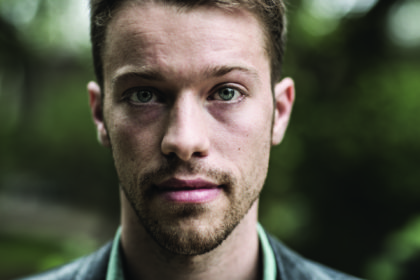

Thanos Polymeneas-Liontiris (UK/GR): Quicklime
Modern Body Festival proudly presents the Dutch premiere of Quicklime!
Quicklime is an invitation to dive into the remnants of an ecosystem inhabited by “standing swimmers” suspended in a space-time continuum. The rarefied landscape is a situation of inertia that suggests the moment right before the beginning or the end of an event. The durational performance/ human installation is based on a cybernetic system that follows its own set of rules to evolve gradually – almost unperceivably to the alien eyes – into the soundscape of a posthuman vivarium. The “I” in Quicklime is collective, as the ecology of the landscape is fueled by the synergy of the elements that define it: the performers, the audience and the media. The duration of the event is 4 hours during which the audience can come and go as they wish.
Concept/ direction: Thanos Polymeneas-Liontiris (UK/GR)
Assistant director: M. Eugenia Demeglio (UK/IT)
Text: Heiner Muller, Nikos Ioakeim
Devised with and performed by: M. Eugenia Demeglio (UK/IT), Nikos Ioakeim (NL/GR), Katerina Konstantourou (NL/GR), Nikos Antonopoulos (GR), Goncalo Almeida (NL/PT), Friso Van Wijk (NL), Arthur Leadbetter (UK), Theresa Elflein (UK/DE).
Durational performance / human installation with audience-interactive/participatory aspects.
Date
2 & 3 December
Time
2 Dec, 16:00-20:00
3 Dec, 14:00-18:00
Venue
De Nieuwe Regentes
Ketelhuis
Module
Exhibition
Links
Website
BIO

Thanos Polymeneas-Liontiris (UK/GR) is a composer, performer and sound artist. His practice comprises computer-aided compositions, interactive audiovisual installations and music for dance, theatre and multimedia performances. His works have been commissioned by among others: the Greek National Theatre, Dutch Institute of Architecture, and the Greek Festival of Ancient Drama. He obtained two BA degrees in Double Bass, and in Electronic Music Composition from Rotterdam Conservatoire, while following courses at the Institute of Sonology and at IRCAM. He has two MAs both with distinction, one in Art and Technology and the other in Creative Education. In 2012 he became fellow of the UK Higher Education Academy. Since 2010, Thanos has had teaching positions in different universities in the UK (Falmouth, Sussex). Currently he is an AHRC-funded researcher at University of Sussex. He is also founding member of the Dutch artists collective Apes Container.

Ludmila Rodrigues (NL/BR): The Grotto
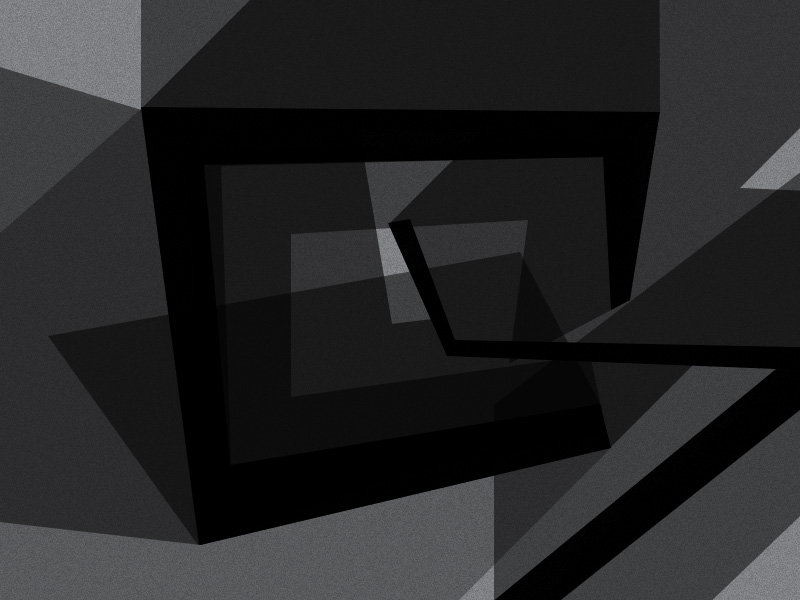
The Grotto is a chamber designed to challenge the visitor’s sense of balance by deliberately tweaking basic spatial references that usually guide us through space. By entering this room one will begin to navigate by touch, rather by sight, becoming increasingly conscious of the qualities of the space that are informed through the skin – notably hands and feet.
Ludmila Rodrigues has a background in architecture and is fascinated by movement perception and embodied intelligence with a focus on the tactile sense. Her ideas are materialized in spaces, situations and devices to engage the audience in playful, sensory experiences. In doing so, visitors become actors of these spontaneous explorations.
Immersive experience
Date
Dec 2-3
Time
12:00 – 20:00
Venues
Paviljoen Baruch
Module
Exhibition
MBF x DEZACT
Sense Immersion
Weblinks
Website
BIO

Ludmila Rodrigues (NL/BR) is an artist, performer and designer fascinated by human interaction, non-verbal communication and tactile experience. Her works materialize in installations, sets and situations where visitors become actors in a shared, collective exploration. Ludmila has a degree in Architecture and Urban Planning by the Federal University of Rio de Janeiro, Brazil, and in Arts by the Artscience Interfaculty, KABK, The Hague. Born in Rio, based in The Netherlands since 2009, Ludmila continues her practice by learning diverse physical techniques to develop body awareness and enrich human communication through her works. Her theses ‘The Body of the Audience’ on the engagement of the public and the relationship between art and audience, has been published by Lambert Academic Published in 2015.

Julien Thomas (CA): Conversation Balance

Conversation Balance is an interpersonal installation that explores the nature of political agency through movement. The installation facilitates participants in performing gestures, scenarios, and concepts in an effort to enable latent forms of political expression to emerge.
The piece facilitates understandings of agency by attuning participants’ senses to body movement, and transforming this movement into physical consequences. A step or jump is immediately felt across the platform, implicating participants in group dynamics outside of their control. Participants may become sensitive to bodies in concert and conflict, and the potential of movement as a form of power.
Performative installation
Date
2 & 3 December
Time
12h-20h
Venue
De Nieuwe Regentes
Studio
Module
Exhibition
Participatory
Links
Website
BIO
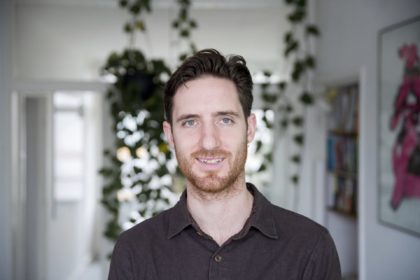
Julien Thomas (CA) is a social designer from Vancouver Canada. He received his BA in International Relations and Conflict Studies before developing an urban design and civic engagement practice. He recently completed his MFA in the Sandberg Instituut’s Designing Democracy temporary program where he investigated conversational dynamics and group decision-making contexts. His current work explores the role of design objects to facilitate political expression.

Workshop: I | Shih Wei Chieh, Manuel Jiménez García & Christina Dahdaleh: Encoding flexible data
How does one integrate one’s own very personal practice with someone else’s very personal practice? How do we leave space for the other, while still holding on to our own identity? In the struggle to find the balance between one’s own autonomy, and allowing others to influence and inspire, the relationship between all our different I’s remains a moveable, fluid space.
Circus acrobatics, aside from its obvious building of strength, balance and flexibility, is also an important exercise in trust, of letting go, giving and taking of space, in order for both to perform their task optimally, and as a team.
A simple lunch, coffee and tea will be provided to all workshop participants.
Softmodeling is an open source Java application by Manuel Jimenez Garcia which seamlessly integrates physical simulations and 3D modeling. This generative design tool enables the digital manipulation of flexible materials, while maintaining the playfulness and flexibility of polygonal modeling design software. During the workshop, participants will use this tool to explore computational design methods through the use of digital-analogue experimentation. They will explore the possibilities of flexible materials, generating a variety of structures with materials that bend, collapse, flip or fold. In addition to using advanced simulation techniques for the creation of complex flexible structures, they will conclude the workshop by working with physical materials to explore and understand how material constraints come to life. They will learn how digital tools can be used to fabricate 3D models and how material understanding could help in the creation of a software for the manipulation of flexible materials in complex design systems.
Shih Wei Chieh’s laser-dye technique is inspired by large area lithography and photography, but is instead applied on 3D surfaces. It uses software-controlled laser beams, driven by sound, to slowly expose UV-sensitive ink painted over fabric or objects. The 2D image is deconstructed into a moving light-path in 3D space – a sequence of points where the beam needs to fall to generate it. Wei Chieh’s method opens discussions about the temporality of the image, both in the slow and sequenced process that is needed to expose it, and in the way the ink continues responding to light until it is rinsed off. Participants will be given a short Max/MSP tutorial on designing patterns/images using audio signals, and will explore the timing relationship between sound and print. They will work hands-on with photo emulsion to create a small work together, using Wei-Chieh’s self-made lasers.
Workshop
Date
November 29
Time
10:30 – 12:00 – Circus acrobatics at Circaso
12:00 – 13:00 – Lunch and moving to Quartair
13:00 – 18:30 – Workshop: Encoding Flexible Data
Venues
Circaso
Quartair
Module
MBF x DEZACT
Workshop
Weblinks
Manuel Jiménez García
Shih Wei-Chieh
The Woven Memory @ MBF
BIOS

Manuel Jiménez García (UK/ES) is currently Co-Director of MereoLab Research Lab at The Bartlett School of Architecture (UCL)(London). He is also Course Master of Research Cluster 4 at the MArch Graduate Architectural Design (GAD) and Unit Master of MArch Unit 19; in addition, Manuel is curator of the Bartlett Computational Plexus, Coordinator of the BPro Skills Elective Module and Programme Director at the Architectural Association’s Visiting School in Madrid (AAVSM). He has taught and run workshops at Architectural Association’s Design Research Laboratory (AADRL, London), Polytechnic University of Architecture (Madrid), European University Madrid, and L’École Spéciale d’Architecture (Paris). Manuel is the co-founder of Ctrl+M and madMdesign, an architecture practice based in London. He has also worked internationally as an architect for Rogers Stirk Harbour + Partners, Minimaforms, Amid(cero9) and Naja & deOstos. His work has been featured widely in Acadia 2012 (San Francisco), Royal Academy Summer Exhibition (London), X Bienal Española de Arquitectura (Spain), and Rethinking the Human in Technology Driven Architecture 2011 (Greece).

Shih Wei-Chieh (TW) is a media artist, e-textile prototype designer and material researcher. He graduated from Media Communication Design of Taipei Shih Chien University in 2010 and now works as an artist and e-textile consultant in Taipei. His work has been presented in many international platforms and festivals such as CTM Festival Berlin, SXSW Festival Texas, Adafruit NYU, Youfab Festival Tokyo. His material practice focuses on stretchable circuits for textiles, printed circuits, photoelectric chemicals and laser processing of materials. Following a funded 2-month long textile research residency in Mexico and 6-month long fair-trade collaboration with a local NGO (Bandui Lab) and Aztec groups 2013, he was inspired to work with traditional Taiwanese textile communities, and to explore the relation between traditional textile techniques, society, and new materials through technology.
Christina Dahdaleh (UK/JO) is a passionate and enthusiastic designer. She graduated from the Bartlett School of Architecture (UCL-London) with a Masters in Architecture, under Nannette Jackowski and Ricardo de Ostos, 2015. She holds first class honours for her Bachelor Degree in Architecture from the Kent School of Architecture, 2012. She currently teaches at the Bartlett School of Architecture, is program coordinator at the AA Visiting School of Madrid, and teaches a masters workshop at UEM. Christina also coordinates the Bartlett Plexus lecture series, an initiative to bring together the creative talent of different disciplines related to computation. Aside from teaching, she is part of the research team at MadMDesign (UK), and has worked at RTKL (UK), Guy Holloway architects (UK), Faris and Faris Architects (Jordan) and Jaafar Toukan Architecture (Jordan).

Workshop: WE | Satoru Sugihara & Ludmila Rodrigues: Agent-based Choreographic Tactics
What are the invisible lines that bind us together? What information is passed between us without our being aware of it? What extraordinary latent ‘intelligence’ do we fail to access and develop? Swarming and synchronization as a phenomenon is an undeniable force in nature, yet escapes our understanding of even our own tendencies towards synchronization and patterns.
Warming up together in a church renovated into a giant trampoline park, we will meet each other while bouncing in space, through various games and activities, exploring basic principles of synchronization and random patterns.
A simple lunch, coffee and tea will be provided to all workshop participants.
Computational design provides a myriad of forms and patterns that resemble natural processes and that have redefined the way we look at the world today. This workshop will meditate on the beauty of emergence out of step-by-step rules, the limitations of movement in the real world and the difficulty of following strict rules without being interfered by human instinct and intelligence – which in turn reveals the mechanism of instinct and how intelligent we are.
Departing with a session of agent-based computational design on Processing – simulating and exploring rule based behaviors and emergence in software- we will go further with choreographic experiments reflecting upon algorithmic systems and social relations. Inspired by computer simulations, we will create situations to rethink the mechanisms of interacting with people and environment, and explore how individual or collective entities may affect a system. Expect both mental and corporeal endeavor, with playful actions and mesmerizing results.
We recommend you to bring a laptop, if possible with Processing already installed (free download here), as well as comfortable clothes and sneakers. No previous experience on computer programming or dancing is required. Being familiar with programming languages is good; having a body knack is a plus.
Swarm formation used by Satoru Sugihara for the Gem of Lives structure.
Workshop
Date
November 30
Time
10:30 – 12:00 – Trampoline jumping with Ludmila @ Planet Jump
12:00 – 13:00 – Lunch and moving to Quartair
13:00 – 18:30 – Workshop: Agent-based Choreographic Tactics
Venues
Planet Jump
Quartair
Module
MBF x DEZACT
Workshop
Weblinks
Satoru Sugihara
Ludmila Rodrigues
Gem of Lives @ MBF
The Grotto
Processing software
BIOS

Satoru Sugihara (US/JP) is a leading computational designer working in the field of architecture, and a faculty member at Southern California Institute of Architecture. In 2012 he founded ATLV, a computational design firm based in Los Angeles. The studio pushes the boundaries of practice and research in contemporary architecture and spatial design, employing algorithms alongside electronic hardware and robotics to seek broader ideas of design, fabrication, and process. Prior to ATLV, Satoru worked as a computational designer at Morphosis Architects engaging in large-scale construction and research projects, and as a researcher in media art and interaction design. He is also the developer of open-source 3D computational design software iGeo. Satoru holds a Master’s degree in Architecture from University of California Los Angeles and a Master’s degree in Computer Science from Tokyo Institute of Technology. He has taught at Architectural Association’s Visiting School, the University of British Columbia, Ecole Nationale Supérieure d’Architecture de Paris-Malaquais, Woodbury University and Tokyo University of the Arts.

Ludmila Rodrigues (NL/BR) is an artist, performer and designer fascinated by human interaction, non-verbal communication and tactile experience. Her works materialize in installations, sets and situations where visitors become actors in a shared, collective exploration. Ludmila has a degree in Architecture and Urban Planning by the Federal University of Rio de Janeiro, Brazil, and in Arts by the Artscience Interfaculty, KABK, The Hague. Born in Rio, based in The Netherlands since 2009, Ludmila continues her practice by learning diverse physical techniques to develop body awareness and enrich human communication through her works. Her theses ‘The Body of the Audience’ on the engagement of the public and the relationship between art and audience, has been published by Lambert Academic Published in 2015.

Workshop: THEY | Jeroen van Ameijde & Luis Rodil-Fernández: Form in motion
How do we share the traces of an ephemeral experience in space? How do we represent past actions in order to share them with those who come after us? In creating relationships between each other, how can we bridge the gap of time and presence?
Popping is a form of street dance that mirrors facets of the digital age. Often incorporating sudden stops and starts of movement throughout the body, popping requires a nearly ‘digital’ control of one’s body, with the ability to isolate specific muscles and engage and disengage them extremely quickly. This kind of parsing of movement, reminiscent of stop-motion animation or glitching when electronic equipment goes haywire, is a fascinating translation into the physical body of our own inclinations to break down, or dissect the world around us.
A simple lunch, coffee and tea will be provided to all workshop participants.
Human behaviour, body movements and urban spaces have a rich and complex interdependence. The ways in which one configures the other are a subtle craft. In classic, as well as modern, designs this relationship was static, sometimes reflected in proportion and scale. The digital domain is well suited to work with more dynamic processes and allows us to more easily incorporate movement in our studies of form. With digital tools we can for example capture, visualize and simulate the motions of individuals as well as groups in a given space. Existing interfaces however do a poor job at allowing us to interact with the digital domain using our full bodies.
In this one-day workshop we propose a set of basic techniques based on computer vision and simple computational agents to produce designs that emerge from the complex interactions between body movement and computational processes. Using just a webcam and software that can be downloaded for free, we will sketch out digital forms using the entirety of our bodies in physical space.
We will use a 4x4m space to create a graphic work of the same size designed entirely through this trip from the physical to the digital and back.
Workshop
Date
December 1
Time
10:30 – 12:00 – Popping workshop with Chunks Ho
12:00 – 13:00 – Lunch
13:00 – 18:30 – Workshop: Form in motion
Venue
Quartair
Module
MBF x DEZACT
Workshop
BIOS

Jeroen van Ameijde (UK/NL) has been involved with academic activities at the Delft University of Technology, University of Pennsylvania, the AA and many other institutions in various capacities for more than ten years. His current research covers digital design, innovative construction technologies and contemporary urbanism. Summarised under the term ‘generative design’, he investigates new methodologies to incorporate detailed information and simulations of the multiple functionalities of possible design solutions. His research considers the contemporary city as a complex system of interrelated networks of material, social and cultural exchange, using the analogy to natural ecosystems to understand the relationships between physical environments and the enabling of many interactions at different scales and periods of time.

Luis Rodil-Fernández (NL/ES) is an artist, researcher, teacher and hacker. His work is concerned with the impact that technologies have on cognition and the human body with particular emphasis in movement and embodied interfaces. Through performances, installations and social games, his work proposes a critical approach to human-computer interactions rooted in movement. He is part of the Qualified Self project, an international research-creation program that aims at exploring the expressive potential of the new wave of biosensing technologies that are marketed under the moniker of Quantified Self. Luis is also co-founder of Algo Research Systems, a platform for researchers, curators and artists that investigate how the increasing automation of society alters the social order, creates mythical narratives around technologies and subjects the human to systematic automatisms. Luis studied Computer Science in Spain, and earned a BA in the Rietveld Academy in Amsterdam and a Masters in after studying Art Science at KABK in The Hague.

Symposium: I

Featuring an international panel of leading theorists, makers, and philosophers in architecture, theater, performance, music, and art, the Modern Body Festival symposium spans 3 evenings, from 29 Nov – 1 Dec, exploring this year’s theme, the ‘social’ body. Each session will focus on one of our three states of being: 29 Nov: I, 30 Nov: WE, 1 Dec: THEY
The first evening, November 29: I, includes 3 lectures, followed by an extended round table with the addition of the artist-architect team that led the day’s workshop. The speakers will talk about their work and open discussions relating to this year’s theme, its context, and the works featured at the festival.
Presenters:
Joel Ryan (NL/US): The inside-out trombone
Ivan Henriques (NL/BR): Hybrid Forms
Ping-Hsiang Chen (UK/TW), Stelios Manousakis (NL/GR) & Stephanie Pan (NL/US): Finding I/WE/THEY
Round table:
Manuel Jiménez García (UK/ES)
Christina Dahdaleh (UK/JO)
Shih Wei-Chieh (TW)
Joel Ryan (NL/US)
Ivan Henriques (NL/BR)
Ping-Hsiang Chen (UK/TW)
Stelios Manousakis (NL/GR)
Stephanie Pan (NL/US)
Entrance is open and free for the public.
Symposium
Date
November 29
Time
20:00 – 22:30
Venues
Quartair
Module
Symposium
Weblinks
Joel Ryan
Ivan Henriques
Ping-Hsiang Chen
Stelios Manousakis
Stephanie Pan
Manuel Jiménez García
Shih Wei-Chieh
BIOS

Spawned in the first generation of artist hackers in San Francisco’s silicon valley, Joel Ryan (NL/US) is a composer, inventor and scientist. Joel moved into music by degrees from physics via philosophy, studying with Herbert Marcuse, Albert Hofstadter, Jose Barroso, Ravi Shankar, Robert Ashley and David Behrman. Ryan sought to bring concreteness to digital electronic media through the intelligent touch of the performer; merging the physical with the digital, he became a pioneer in the design and performance of real-time interactive digital instruments. Formerly a Research Associate at the Lawrence Berkeley Labs of the University of California, Ryan has taught philosophy, physics, and mathematics. He is Emeritus Director of STEIM (which he joined in 1984) and Docent in Sonology at the Royal Conservatory Den Haag. He has performed around the world and has collaborated extensively with composers, musicians and artists such as: Evan Parker, William Forsyth, George Lewis, Steina Vasulka, FM Uitti, Agusti Fernandes, Najib Cherradi, Peter Evans and Sainkho Namtchylak, Jerry Hunt, Michel Waisvisz and ArtAngel.

Ivan Henriques (NL/BR) is a transdisciplinary artist and researcher working in multimedia installations examining living systems. He explores in his works hybrids of nature and (technological) culture creating new forms of communication between humans and other living organisms. He considers nature as inspiration and a necessary factor in the development of the technological world. Lately he won the Stimuleringsfonds Talent Award 2015-16, Proven Talent Award from Mondriaan Fonds 2015-19, New Face Award from the 18th Japan Media Arts Festival and the Honorary Mention for the [next] Idea, Ars Electronica 2014 amongst other prizes. Henriques also gives lectures and workshops around the globe and his artworks have been shown in relevant art/new media institutions and art collections.

Ping-Hsiang Chen (UK/TW) is an architect and computational designer specializing in parametric design, environmental simulation and multi-media communication in London. Ping-Hsiang completed his RIBA Part 1 and Part2 at AA school of Architecture and has a master degree in Architecture and Digital Media at the University of Westminster, London. He is the co-founder of DEZACT and founder of [IN] Morph Lab, a research based studio where he explores computational design, digital media and fabrication in architecture. He has taught computational design and design studio at Shih Chein University in Taiwan, and AA visiting school in Israel. He is a workshop teaching fellow at Digital Prototyping Lab at Architectural Association School of Architecture and a digital fabrication consultant across UK and Taiwan. His architectural- and art-works have been showcased and exhibited internationally.

Stephanie Pan (NL/US) is a vocalist and multi-instrumentalist, performance artist, and maker based in The Hague, specializing in experimental music, new music, and experimental theater. Her work is rooted in the search for pure communication; finding contact with the audience stripped of expectations and distractions, which speaks beyond the conventional limitations and constructs of language. Her work is visceral, passionate and intense, often exploring the limits of the voice and body. Stephanie has performed extensively throughout the US and Europe. She holds a Masters in Theatre from DasArts (AHK), BA from UC Berkeley in Music and Applied Mathematics, and First Phase Diploma, with distinction, in Classical Singing from The Royal Conservatory, The Hague. Besides her solo work, she has co-founded several numerous music project, and most recently the intermedial Modern Body Festival.

Stelios Manousakis (GR/NL) is an artist exploring relationships between time, space, body, system, and sound. His work is particularly concerned with the invisible and the ephemeral, and with shaping sensation, perception and experience in time. His practice lies in the convergence zones of art, philosophy, science and engineering; it extends from performances, to environments and interactive installations, to compositions, fixed media pieces, and film music. Besides his solo work, he has co-founded several music and multimedia groups, and most recently the intermedial Modern Body Festival. Stelios studied music and linguistics in Greece, Sonology in the Netherlands, and is currently finishing a PhD in Visual and Performing Arts at the Center for Digital Arts and Experimental Media.

Shih Wei-Chieh (TW) is a media artist, e-textile prototype designer and material researcher. He graduated from Media Communication Design of Taipei Shih Chien University in 2010 and now works as an artist and e-textile consultant in Taipei. His work has been presented in many international platforms and festivals such as CTM Festival Berlin, SXSW Festival Texas, Adafruit NYU, Youfab Festival Tokyo. His material practice focuses on stretchable circuits for textiles, printed circuits, photoelectric chemicals and laser processing of materials. Following a funded 2-month long textile research residency in Mexico and 6-month long fair-trade collaboration with a local NGO (Bandui Lab) and Aztec groups 2013, he was inspired to work with traditional Taiwanese textile communities, and to explore the relation between traditional textile techniques, society, and new materials through technology.

Manuel Jiménez García (UK/ES) is currently Co-Director of MereoLab Research Lab at The Bartlett School of Architecture (UCL)(London). He is also Course Master of Research Cluster 4 at the MArch Graduate Architectural Design (GAD) and Unit Master of MArch Unit 19; in addition, Manuel is curator of the Bartlett Computational Plexus, Coordinator of the BPro Skills Elective Module and Programme Director at the Architectural Association’s Visiting School in Madrid (AAVSM). He has taught and run workshops at Architectural Association’s Design Research Laboratory (AADRL, London), Polytechnic University of Architecture (Madrid), European University Madrid, and L’École Spéciale d’Architecture (Paris). Manuel is the co-founder of Ctrl+M and madMdesign, an architecture practice based in London. He has also worked internationally as an architect for Rogers Stirk Harbour + Partners, Minimaforms, Amid(cero9) and Naja & deOstos. His work has been featured widely in Acadia 2012 (San Francisco), Royal Academy Summer Exhibition (London), X Bienal Española de Arquitectura (Spain), and Rethinking the Human in Technology Driven Architecture 2011 (Greece).
Christina Dahdaleh (UK/JO) is a passionate and enthusiastic designer. She graduated from the Bartlett School of Architecture (UCL-London) with a Masters in Architecture, under Nannette Jackowski and Ricardo de Ostos, 2015. She holds first class honours for her Bachelor Degree in Architecture from the Kent School of Architecture, 2012. She currently teaches at the Bartlett School of Architecture, is program coordinator at the AA Visiting School of Madrid, and teaches a masters workshop at UEM. Christina also coordinates the Bartlett Plexus lecture series, an initiative to bring together the creative talent of different disciplines related to computation. Aside from teaching, she is part of the research team at MadMDesign (UK), and has worked at RTKL (UK), Guy Holloway architects (UK), Faris and Faris Architects (Jordan) and Jaafar Toukan Architecture (Jordan).

Symposium: WE
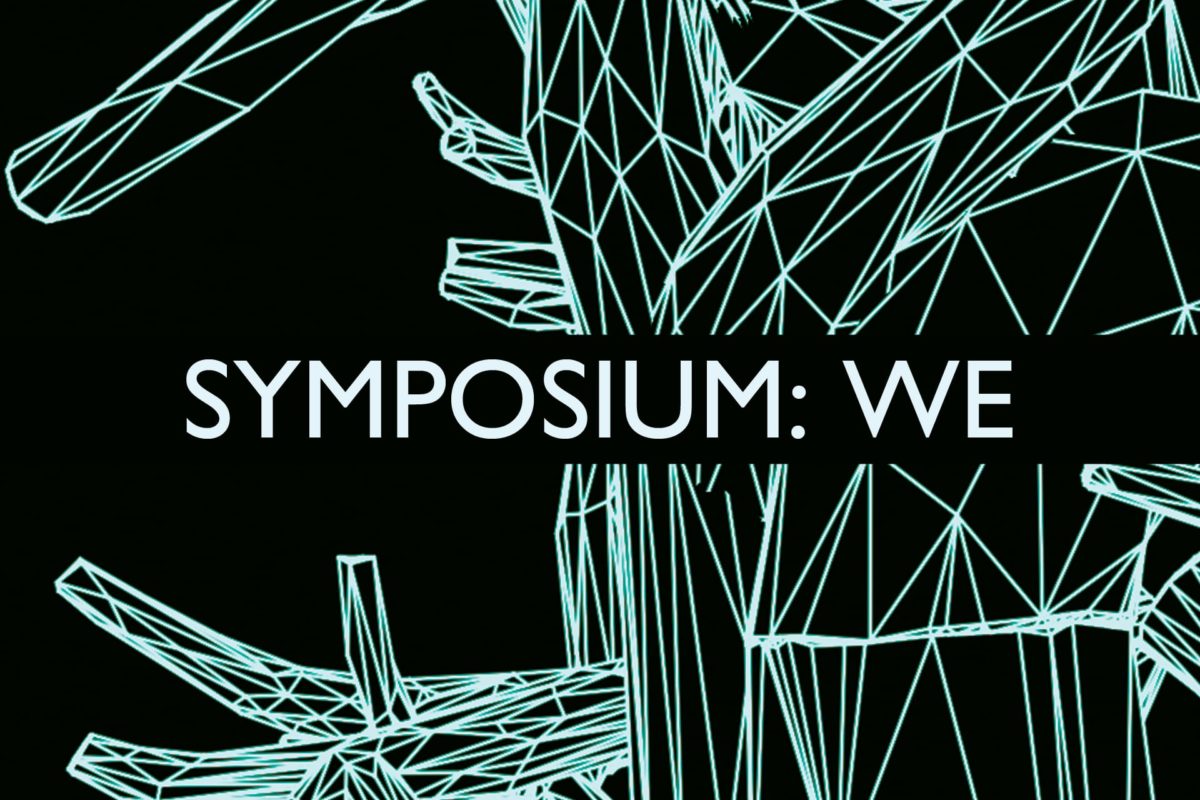
Featuring an international panel of leading theorists, makers, and philosophers in architecture, theater, performance, music, and art, the Modern Body Festival symposium spans 3 evenings, from 29 Nov – 1 Dec, exploring this year’s theme, the ‘social’ body. Each session will focus on one of our three states of being: 29 Nov: I, 30 Nov: WE, 1 Dec: THEY
The second evening, November 30: WE, includes 3 lectures, followed by an extended round table with the addition of the artist-architect team that led the day’s workshop. The speakers will talk about their work and open discussions relating to this year’s theme, its context, and the works featured at the festival.
Presenters:
Cocky Eek (NL): How to produce a gap
Dr. Nimish Biloria (NL/IN): InfoMatter: The case of Pro-Active Spatial Environments
Raviv Ganchrow (NL/US): Contextual Circuitry: Towards an Ambient Subjectivity
Round table:
Ludmila Rodrigues (NL/BR)
Satoru Sugihara (US/JP)
Cocky Eek (NL)
Dr. Nimish Biloria (NL/IN)
Raviv Ganchrow (NL/US)
Entrance is open and free for the public.
Symposium
Date
November 30
Time
20:00 – 22:30
Venues
Nutshuis
Module
Symposium
Weblinks
Cocky Eek (NL)
Dr. Nimish Biloria (NL/IN)
Satoru Sugihara
Ludmila Rodrigues
BIOS
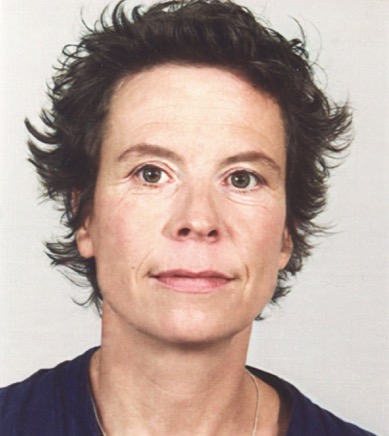
Cocky Eek’s (NL) work has been mainly revolving around lightweight spatial compositions and her favorite media are wind and air. This resulted in floating or flying experiments or large, voluminous pneumatic forms that explores human perception where we don’t move through space, but space moves through us. She has presented her work at renown venues and festivals, as V2_’s DEAF – Rotterdam, Ars Electronica Festival – Linz, Le Lieu Unique – Nantes, Oerol Festival -Terschelling, AxS Festival – Los Angeles, ISEA Albuquerque – New Mexico and the Rockbund Art Museum – Shanghai. Besides her own practice she works with FoAM (since 2001) and Schweigman& (since 2012) and she is a core teacher of The ArtScience Interfaculty of the Royal Conservatoire and Royal Academy of Art in The Hague.
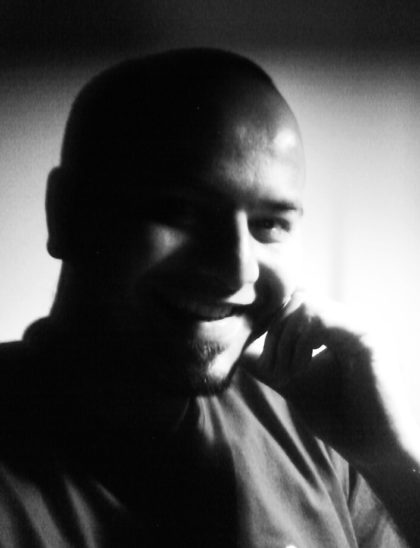
Dr. Nimish Biloria (NL/IN) is an Architect and Assistant Professor at Hyperbody, Faculty of Architecture, TU Delft. After being involved with investigating the inter-relation of Media and Architecture throughout his formative educational years at CEPT in India, he furthered his interests in the interdisciplinary realm at the Architectural Association (UK) where he specialized in the field of Emergent Technologies and Design. He attained a Doctorate at TU Delft with a focus on developing real time adaptive environments. Dr. Biloria is the Research Manager of Hyperbody, and is involved with developing computationally enhanced performative & sustainable architectural and urban design solutions. He specifically seeks a synergistic merger of the fields of computation, material systems, sensing technologies, environmental dynamics and social demographics, and is a proponent of bio-inspired performative design solutions. Dr. Biloria has lectured at prestigious institutes globally, and has presented and published his research in numerous international conferences and magazines.
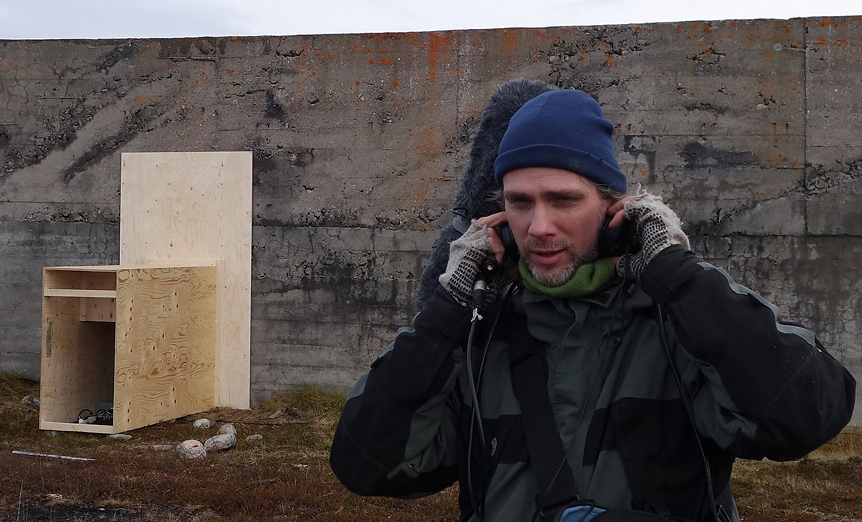
Raviv Ganchrow’s (NL/US) work researches the interdependencies between sound, place, and listening, aspects of which are explored through installations, writing, and the development of pressure-forming and vibration-sensing technologies. Recent installations examine context-dependent sites of contemporary listening relating to environmental infrasound (Long-Wave Synthesis), mineral piezoelectricity (Quarzbrecciakammer), materiality of radio transmission (Radio Plays Itself & Forecast for Shipping), and anechoic chambers (work in progress). His ongoing Listening Subjects project tests an ambient circuitry whereby audibility, surroundings, and subjectivity are mutually conductive. He has been teaching architectural design in the graduate program at TU Delft and is currently a faculty member at the Institute of Sonology, University of the Arts, The Hague.

Satoru Sugihara (US/JP) is a leading computational designer working in the field of architecture, and a faculty member at Southern California Institute of Architecture. In 2012 he founded ATLV, a computational design firm based in Los Angeles. The studio pushes the boundaries of practice and research in contemporary architecture and spatial design, employing algorithms alongside electronic hardware and robotics to seek broader ideas of design, fabrication, and process. Prior to ATLV, Satoru worked as a computational designer at Morphosis Architects engaging in large-scale construction and research projects, and as a researcher in media art and interaction design. He is also the developer of open-source 3D computational design software iGeo. Satoru holds a Master’s degree in Architecture from University of California Los Angeles and a Master’s degree in Computer Science from Tokyo Institute of Technology. He has taught at Architectural Association’s Visiting School, the University of British Columbia, Ecole Nationale Supérieure d’Architecture de Paris-Malaquais, Woodbury University and Tokyo University of the Arts.

Ludmila Rodrigues (NL/BR) is an artist, performer and designer fascinated by human interaction, non-verbal communication and tactile experience. Her works materialize in installations, sets and situations where visitors become actors in a shared, collective exploration. Ludmila has a degree in Architecture and Urban Planning by the Federal University of Rio de Janeiro, Brazil, and in Arts by the Artscience Interfaculty, KABK, The Hague. Born in Rio, based in The Netherlands since 2009, Ludmila continues her practice by learning diverse physical techniques to develop body awareness and enrich human communication through her works. Her theses ‘The Body of the Audience’ on the engagement of the public and the relationship between art and audience, has been published by Lambert Academic Published in 2015.

Symposium: THEY
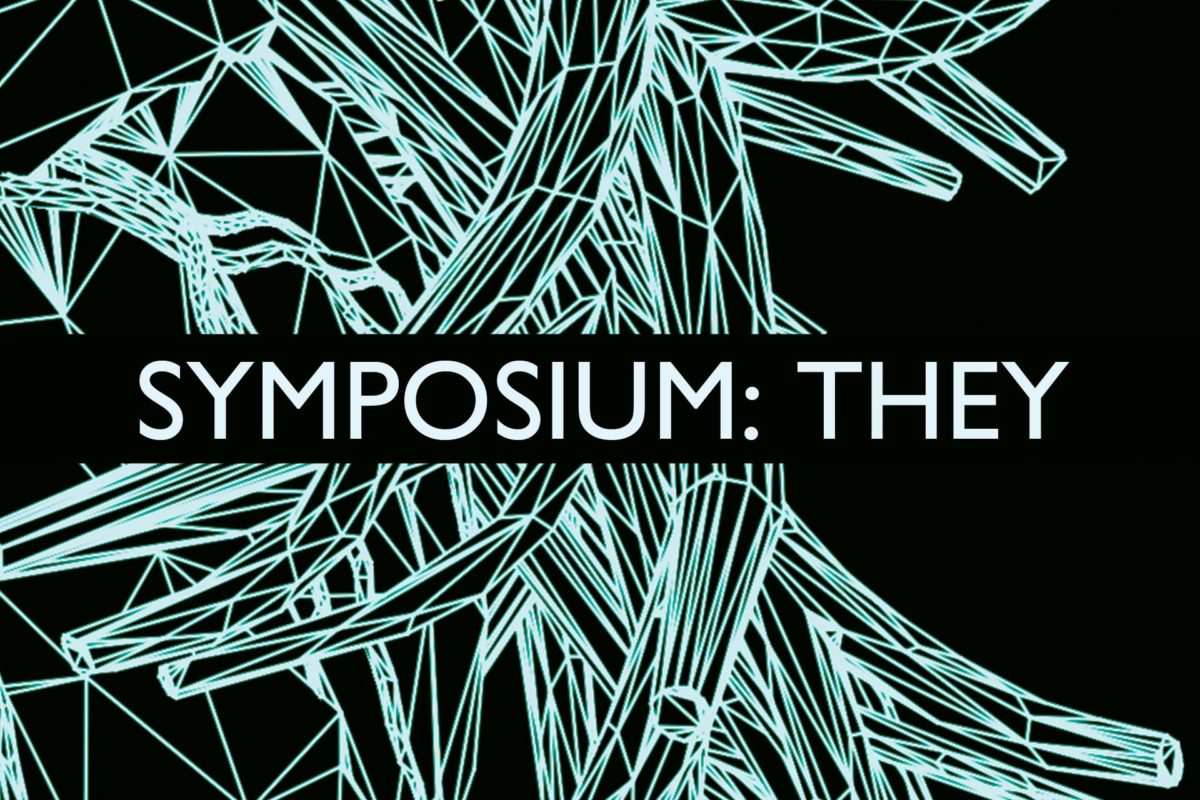
Featuring an international panel of leading theorists, makers, and philosophers in architecture, theater, performance, music, and art, the Modern Body Festival symposium spans 3 evenings, from 29 Nov – 1 Dec, exploring this year’s theme, the ‘social’ body. Each session will focus on one of our three states of being: 29 Nov: I, 30 Nov: WE, 1 Dec: THEY
The last evening, December 1: THEY, includes 3 lectures, followed by an extended round table with the addition of the artist-architect team that led the day’s workshop. The speakers will talk about their work and open discussions relating to this year’s theme, its context, and the works featured at the festival.
Presenters:
Tivon Rice (US): Mapping the Visual layer: Drones and Urban Photogrammetry
WeiHaw Wang (TW/JP/UK): Adaptable and Manual Model Making
Doreen Bernath (UK): Formatting the Scrambled Body
Round table:
Jeroen van Ameijde (UK/NL)
Luis Rodil-Fernández (NL/ES)
Tivon Rice (US)
WeiHaw Wang (TW/JP/UK)
Doreen Bernath (UK)
Entrance is open and free for the public.
Symposium
Date
December 1
Time
20:00 – 22:30
Venues
Nutshuis
Module
Symposium
Weblinks
Tivon Rice
WeiHaw Wang
Doreen Bernath
Jeroen van Ameijde
Luis Rodil-Fernández
BIOS

Tivon Rice‘s (US) work critically explores representation and communication in the context of digital technologies. Both fascinated with and wary of the speed of televisual media, Rice creates systems that pair immediate materials such as light, space, and tangible forms with live and recorded sound and video. While his practice is primarily concerned with emerging social relationships to digital technology, Rice draws heavily from art historical themes. In doing so, he examines the conditions of surrealist and minimalist attitudes in contemporary new-media arts. Rice is a 2011-12 Fulbright Scholar, and a PhD candidate at the University of Washington’s Center for Digital Art and Experimental Media, where he teaches courses in Video Art and Installation.

Wei-Haw Wang (TW/JP/UK) is a Taiwanese-born British architect who has spent most of his professional career in the UK. He is currently based in Taiwan and Japan, and is the director of Sawara architectural firm. While his private practice deals with smaller residential projects, he also provides technical consultation for the parametric and computational departments of other architectural corporations. He has conducted computational design workshops for MTech, Architectural Association (AA), and London Metropolitan University in 2009. While at KPF London, he also worked on various architectural projects involving parametric design – an airport terminal, a football stadium, a mixed-use high rise, and private space installations. Wei-Haw graduated with an MArch from The Bartlett School of Architecture in London (UCL).
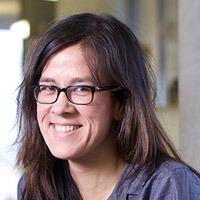
Doreen Bernath (UK) is an architect and a theorist across disciplines of design, technology, philosophy, visual art and culture. She is a founding partner of Space- Media Int, and the director and co-founder of DEZACT. Doreen completed her PhD at AA London with the award of RIBA LKE Ozolins Scholarship. She studied BA and MA at University of Cambridge, then for many years practiced professionally in London, Shanghai and Taipei. Since 2006, she taught extensively and participated in research projects in universities across UK, Germany, Costa Rica, China and Taiwan. Her articles and research output have appeared in many established intenrational journals and magazines. She is currently teaching history and theory in Diploma and DRL at Architectural Association School of Architecture, UCL Bartlett and Leeds University.

Jeroen van Ameijde (UK/NL) has been involved with academic activities at the Delft University of Technology, University of Pennsylvania, the AA and many other institutions in various capacities for more than ten years. His current research covers digital design, innovative construction technologies and contemporary urbanism. Summarised under the term ‘generative design’, he investigates new methodologies to incorporate detailed information and simulations of the multiple functionalities of possible design solutions. His research considers the contemporary city as a complex system of interrelated networks of material, social and cultural exchange, using the analogy to natural ecosystems to understand the relationships between physical environments and the enabling of many interactions at different scales and periods of time.

Luis Rodil-Fernández (NL/ES) is an artist, researcher, teacher and hacker. His work is concerned with the impact that technologies have on cognition and the human body with particular emphasis in movement and embodied interfaces. Through performances, installations and social games, his work proposes a critical approach to human-computer interactions rooted in movement. He is part of the Qualified Self project, an international research-creation program that aims at exploring the expressive potential of the new wave of biosensing technologies that are marketed under the moniker of Quantified Self. Luis is also co-founder of Algo Research Systems, a platform for researchers, curators and artists that investigate how the increasing automation of society alters the social order, creates mythical narratives around technologies and subjects the human to systematic automatisms. Luis studied Computer Science in Spain, and earned a BA in the Rietveld Academy in Amsterdam and a Masters in after studying Art Science at KABK in The Hague.
